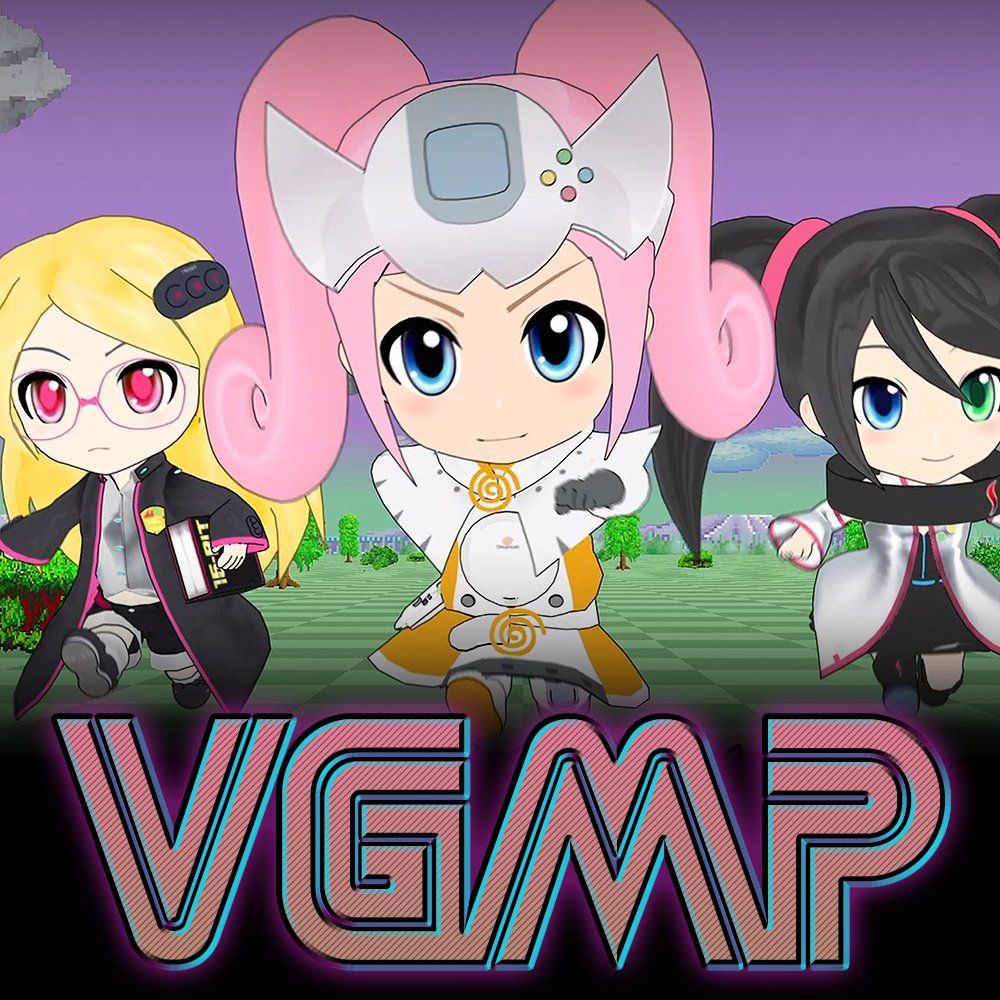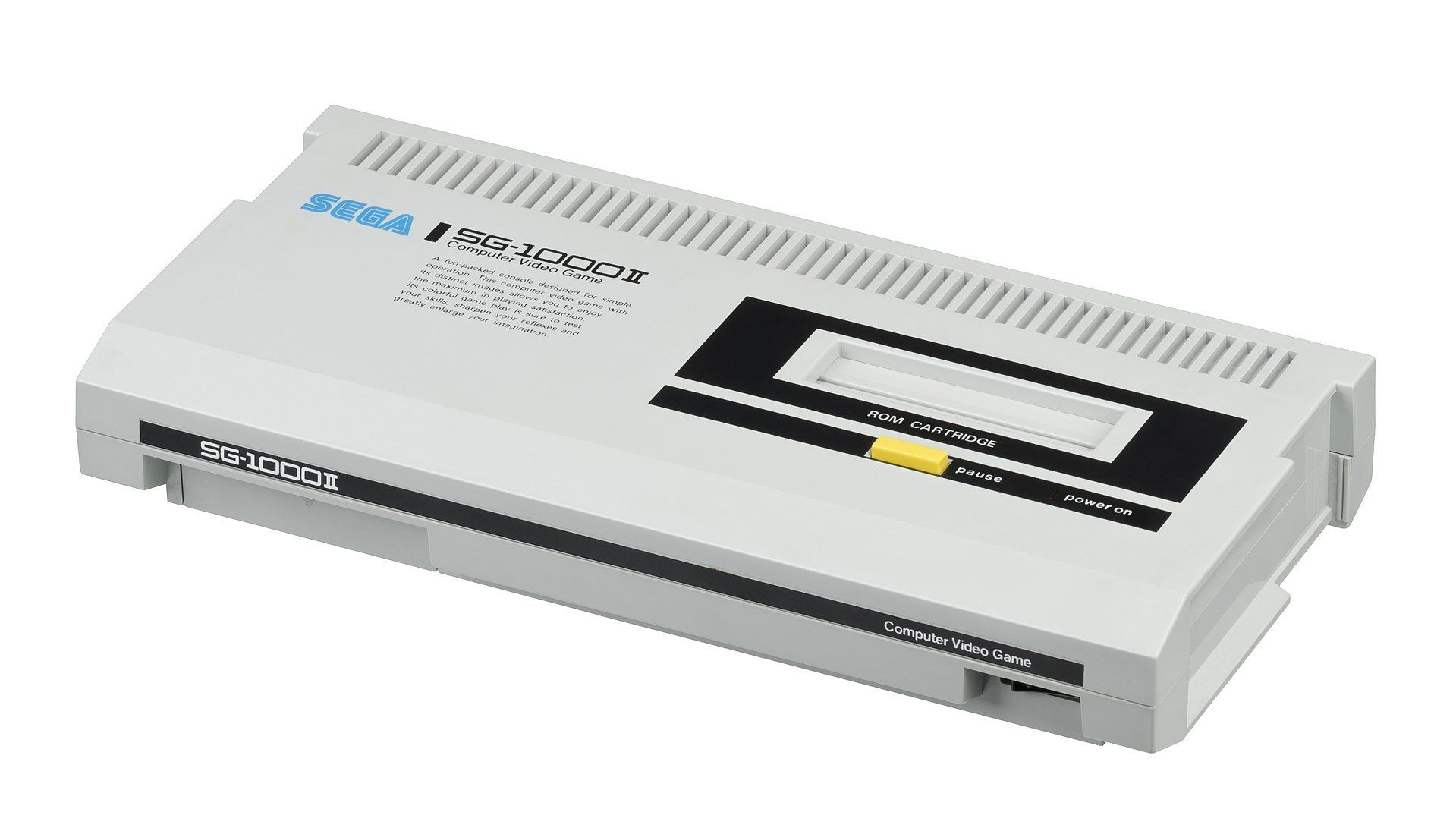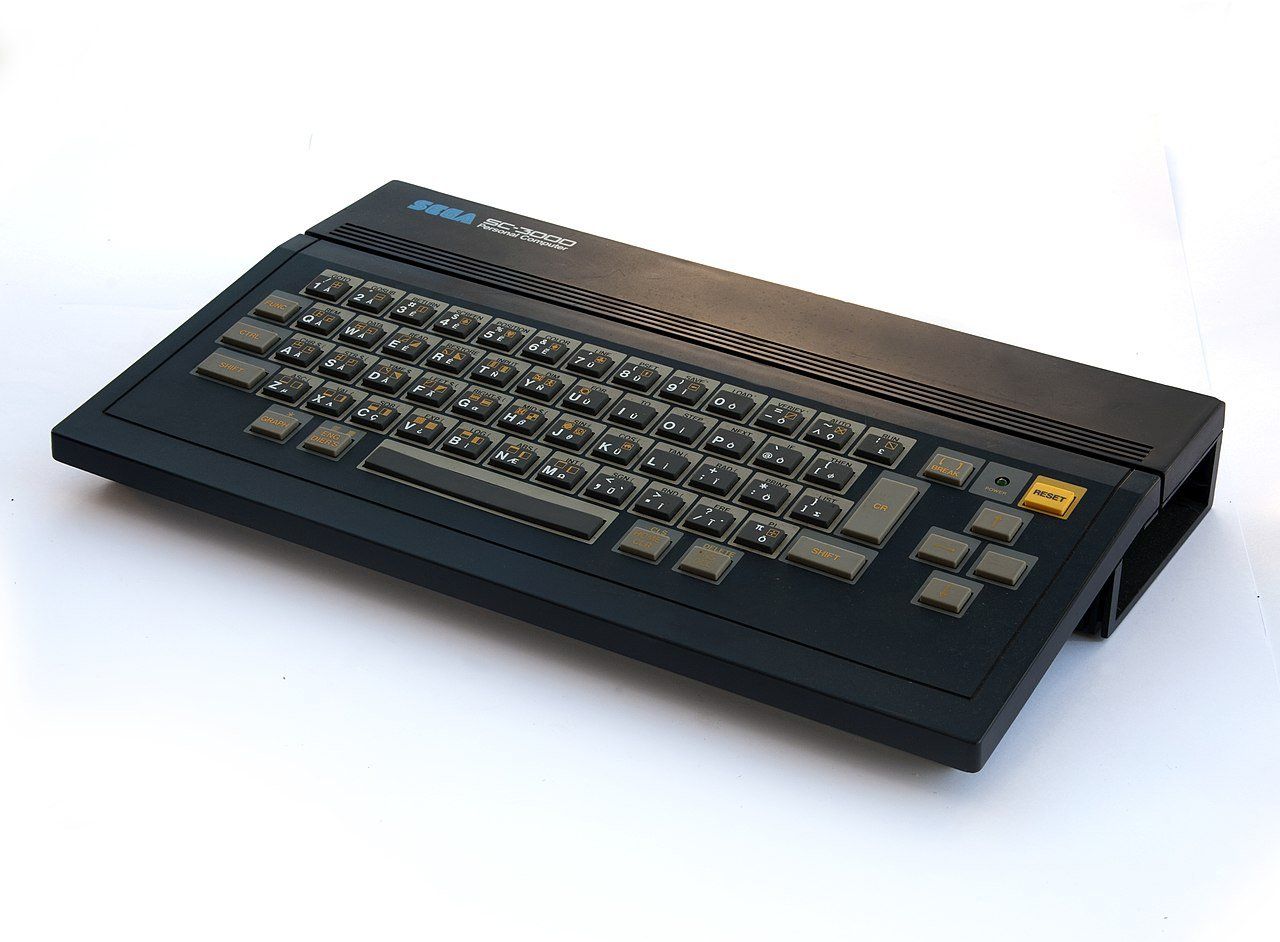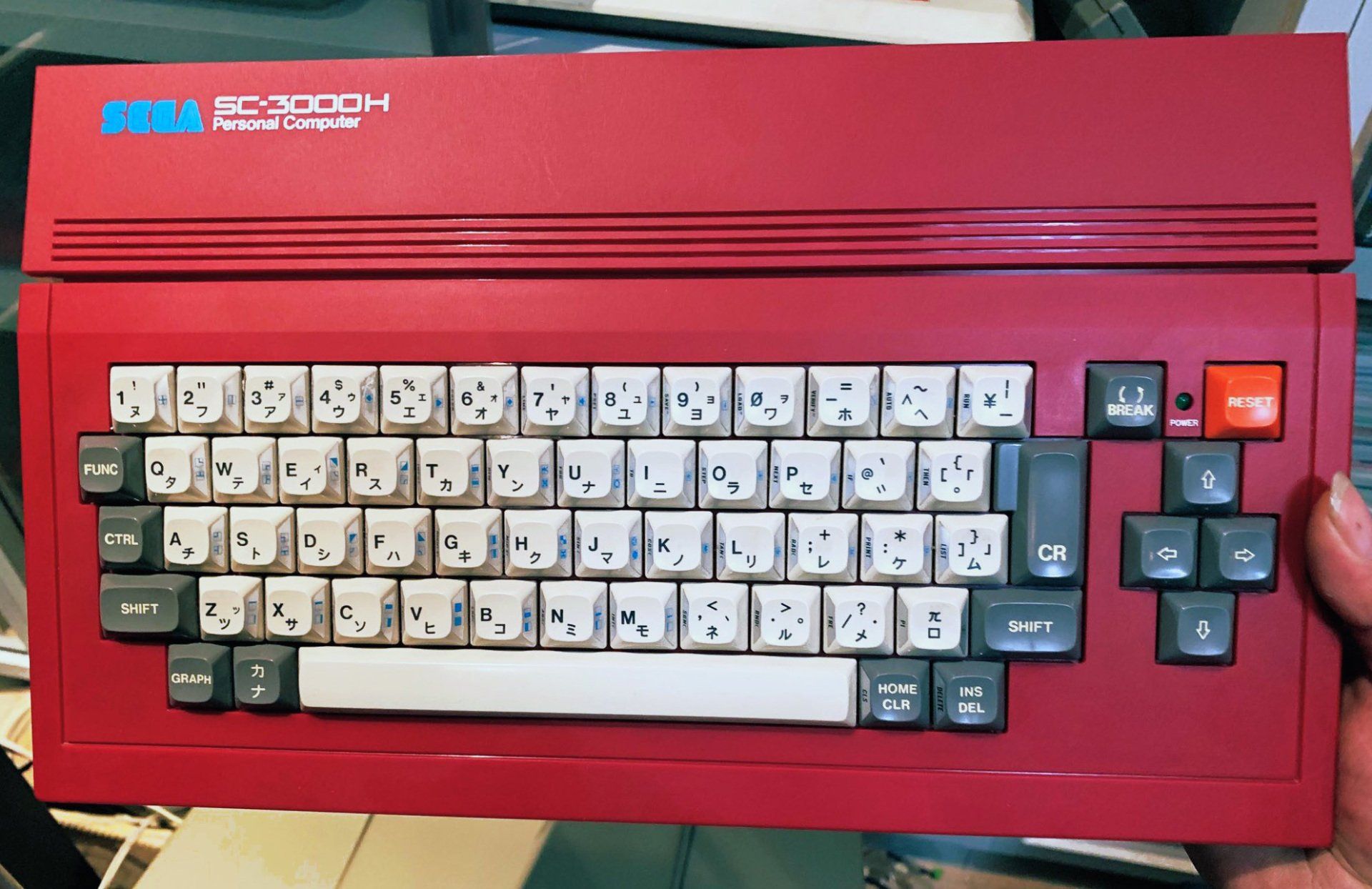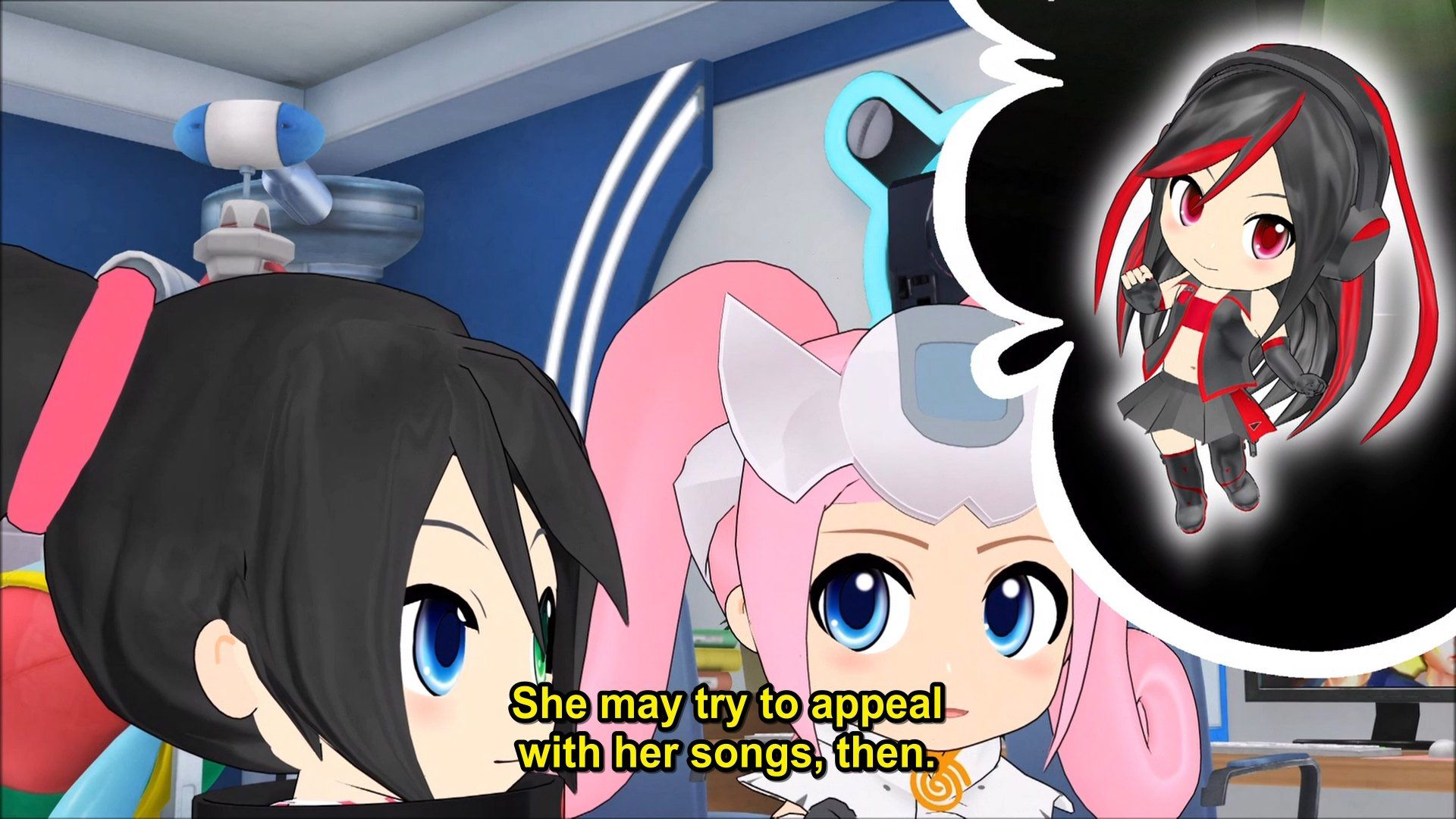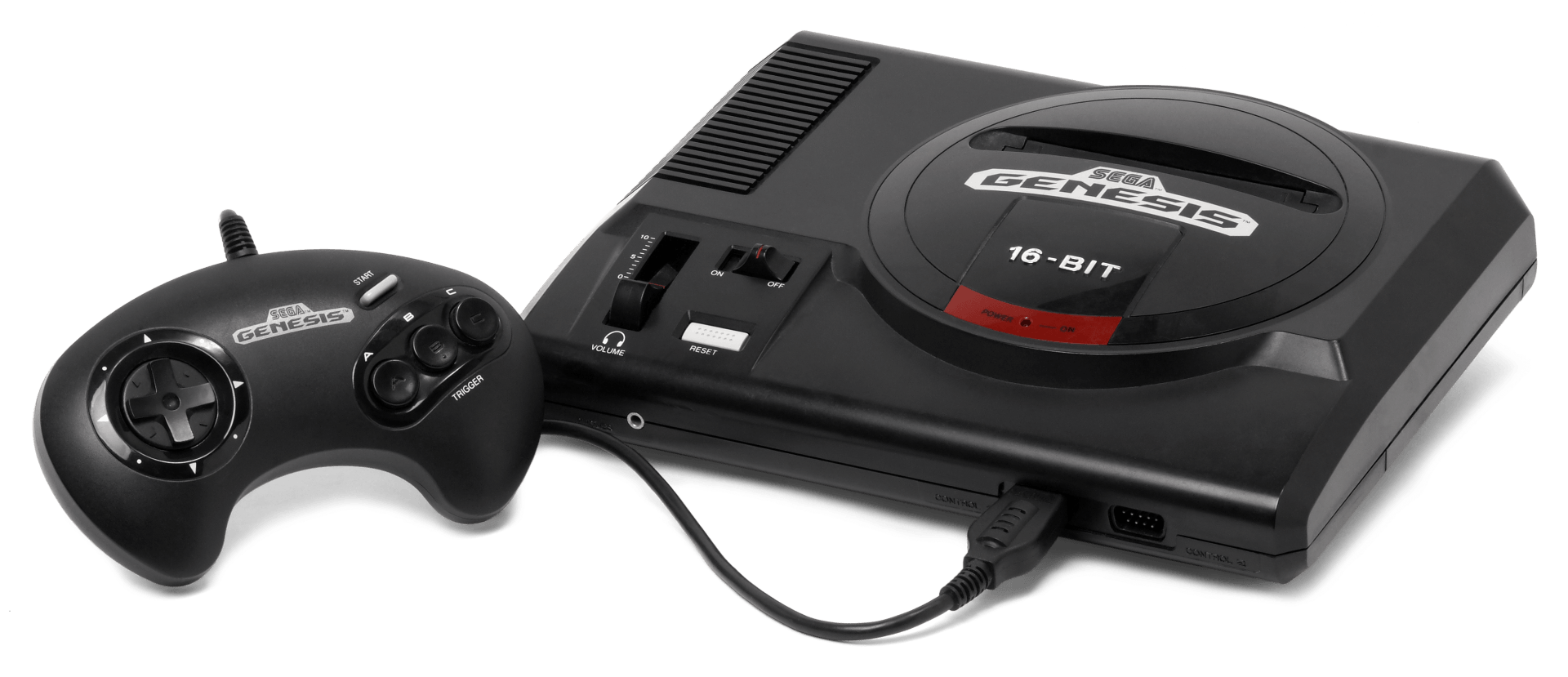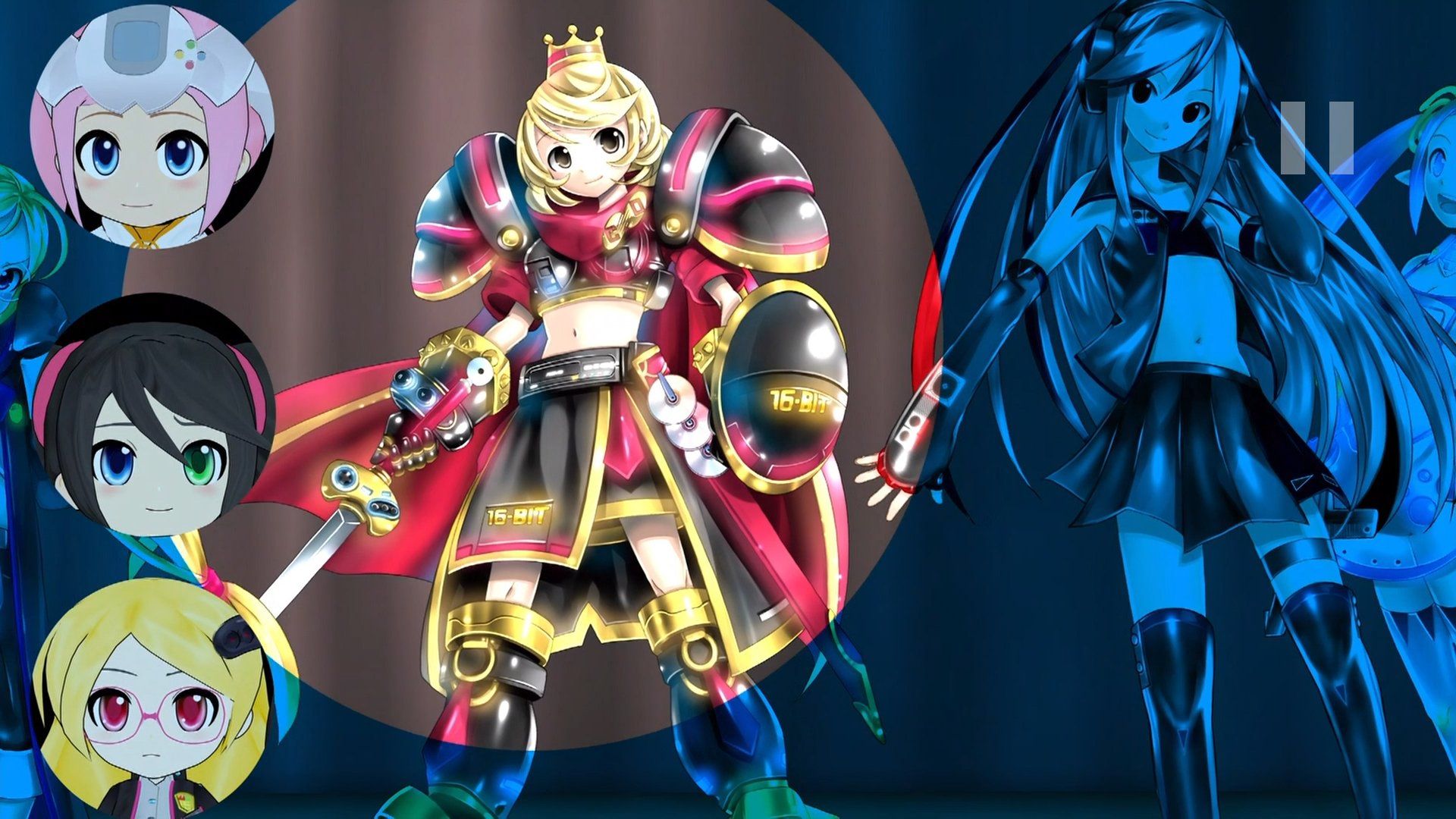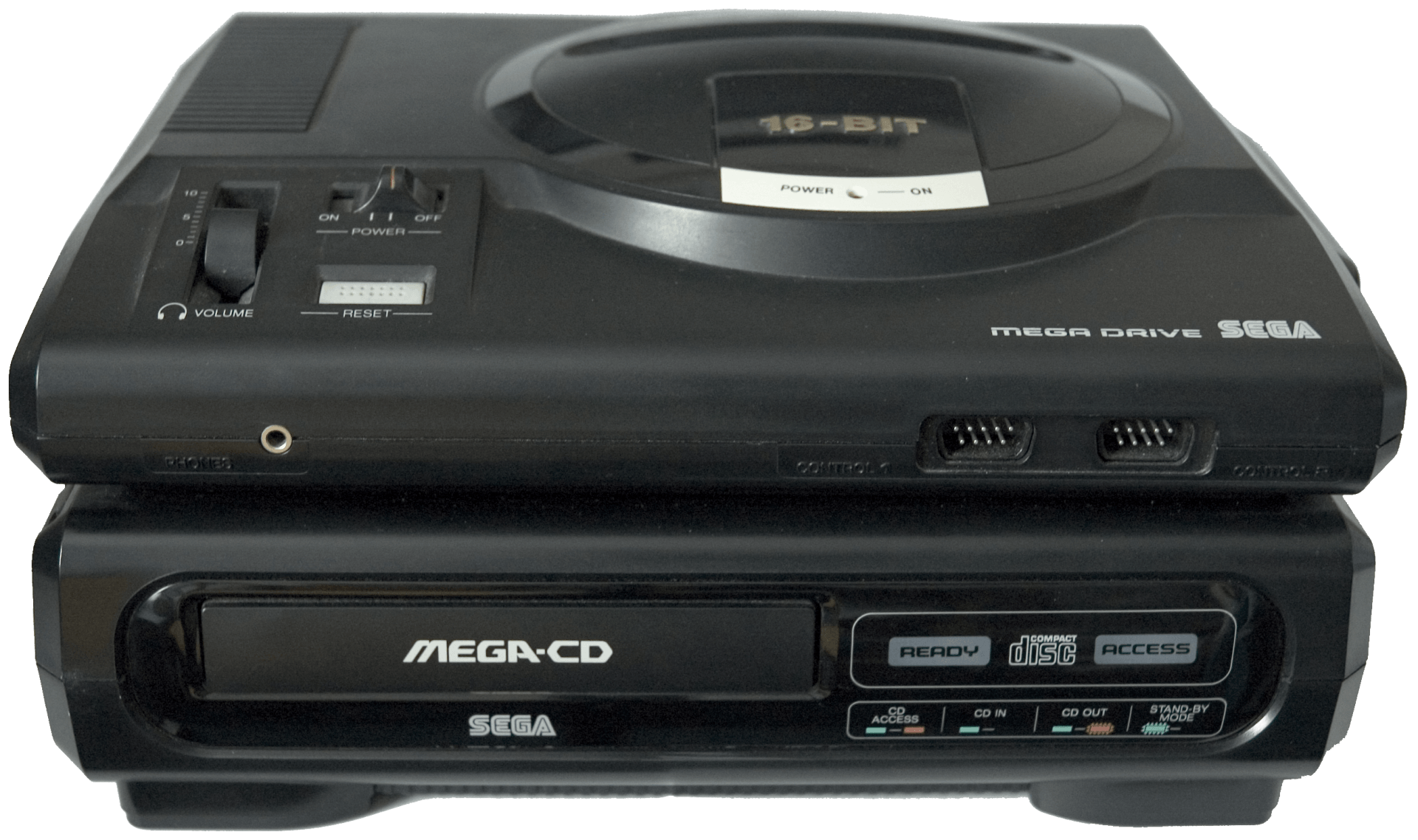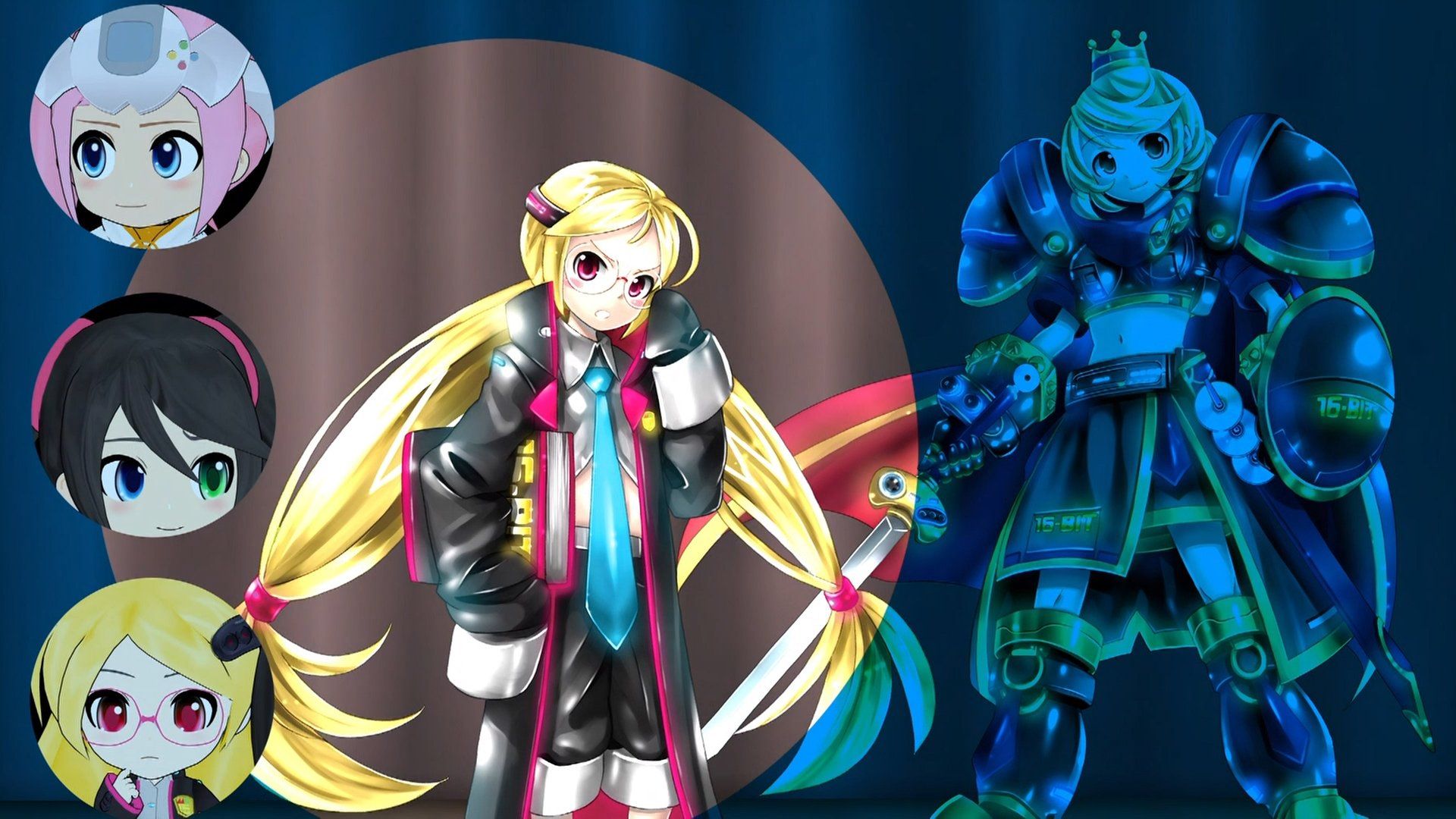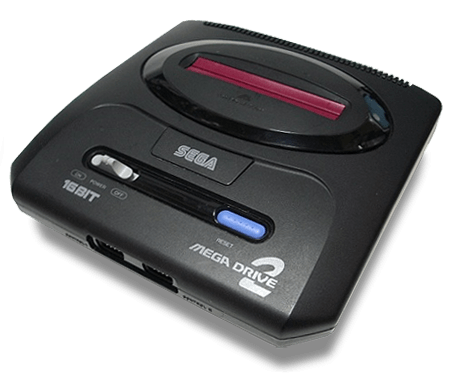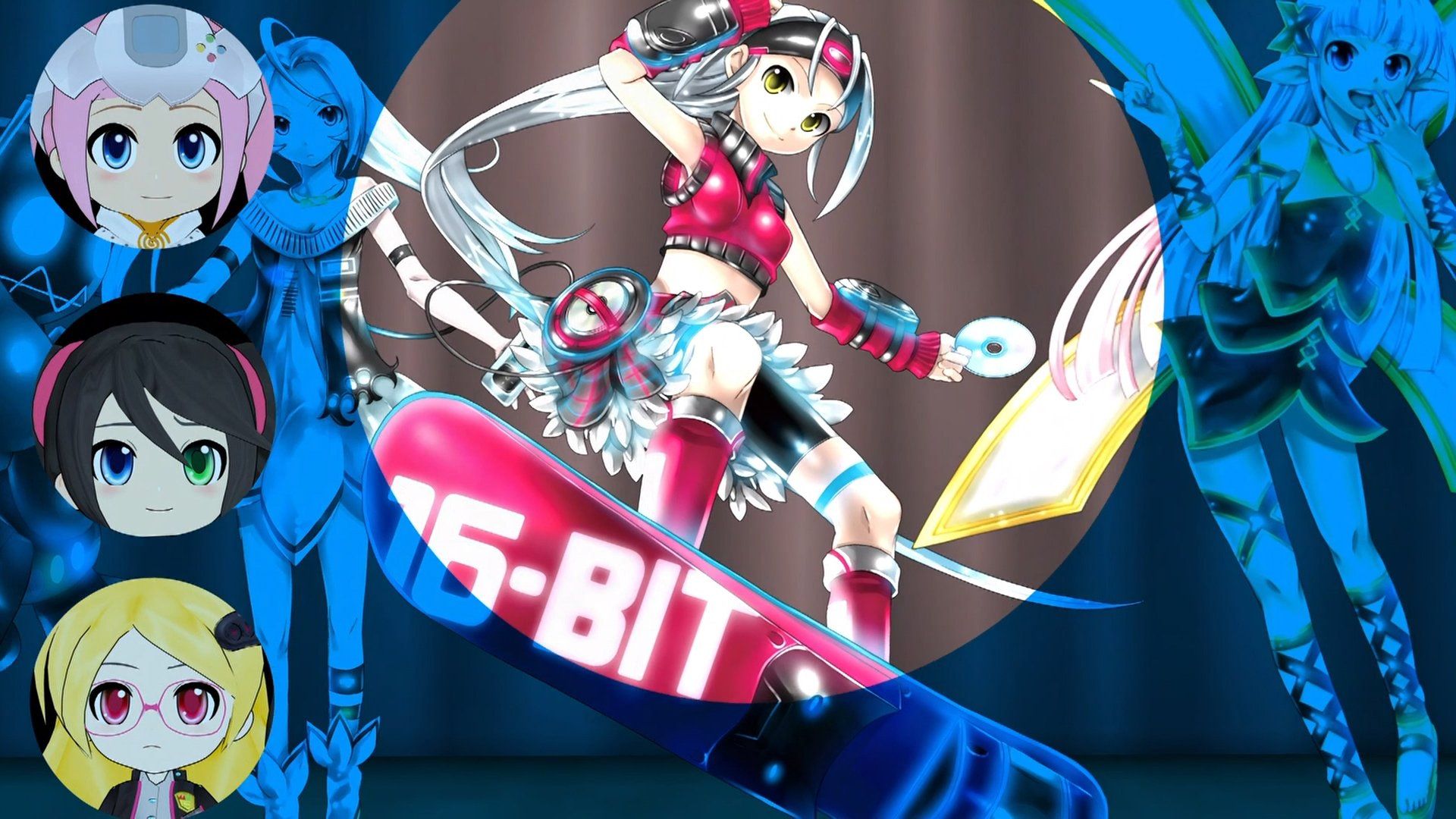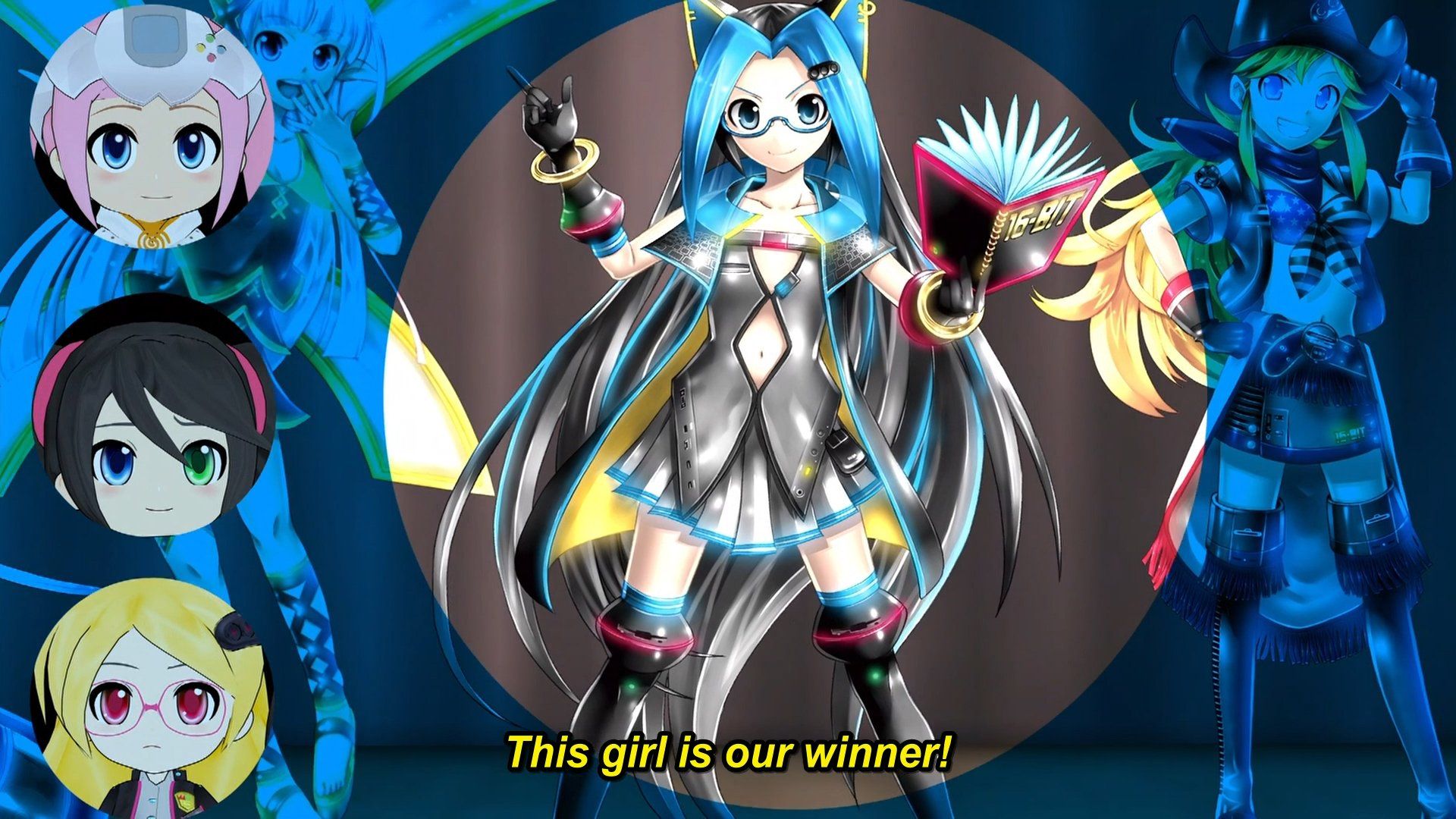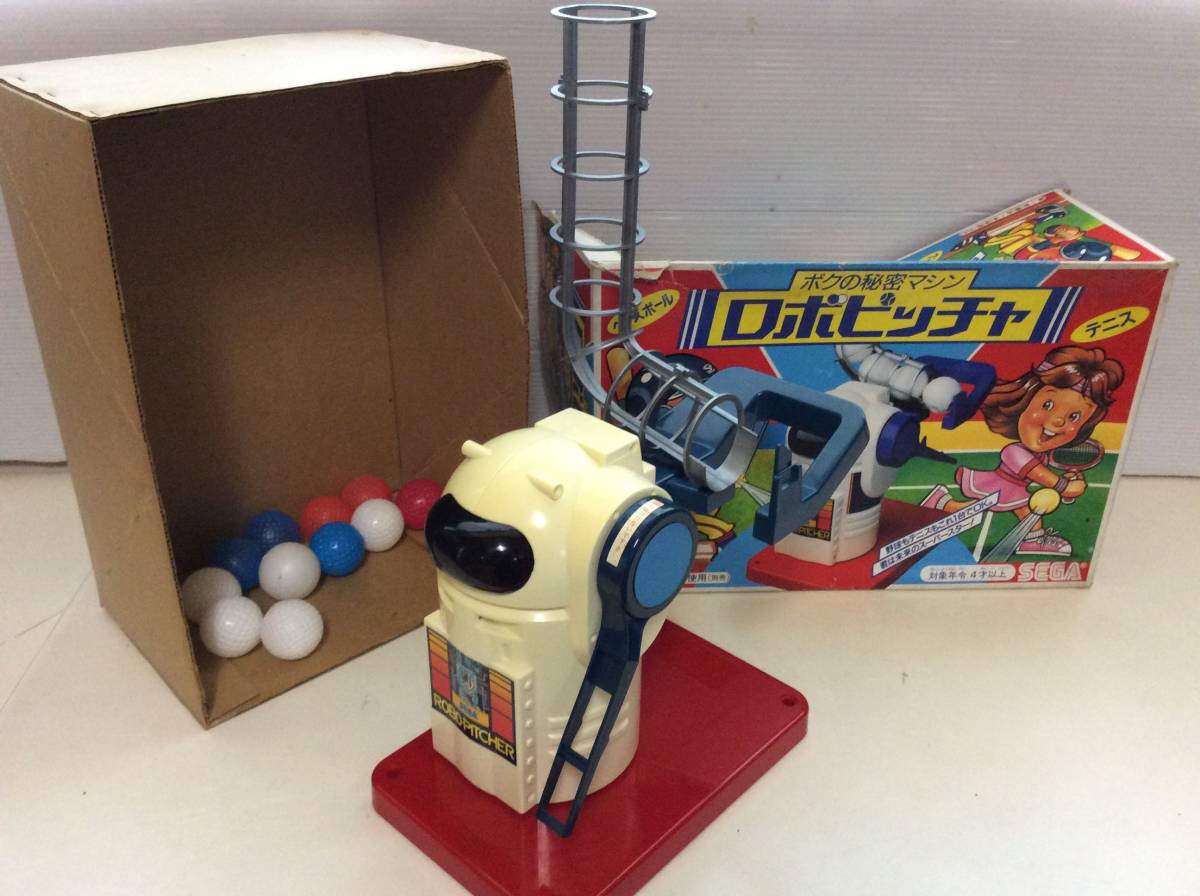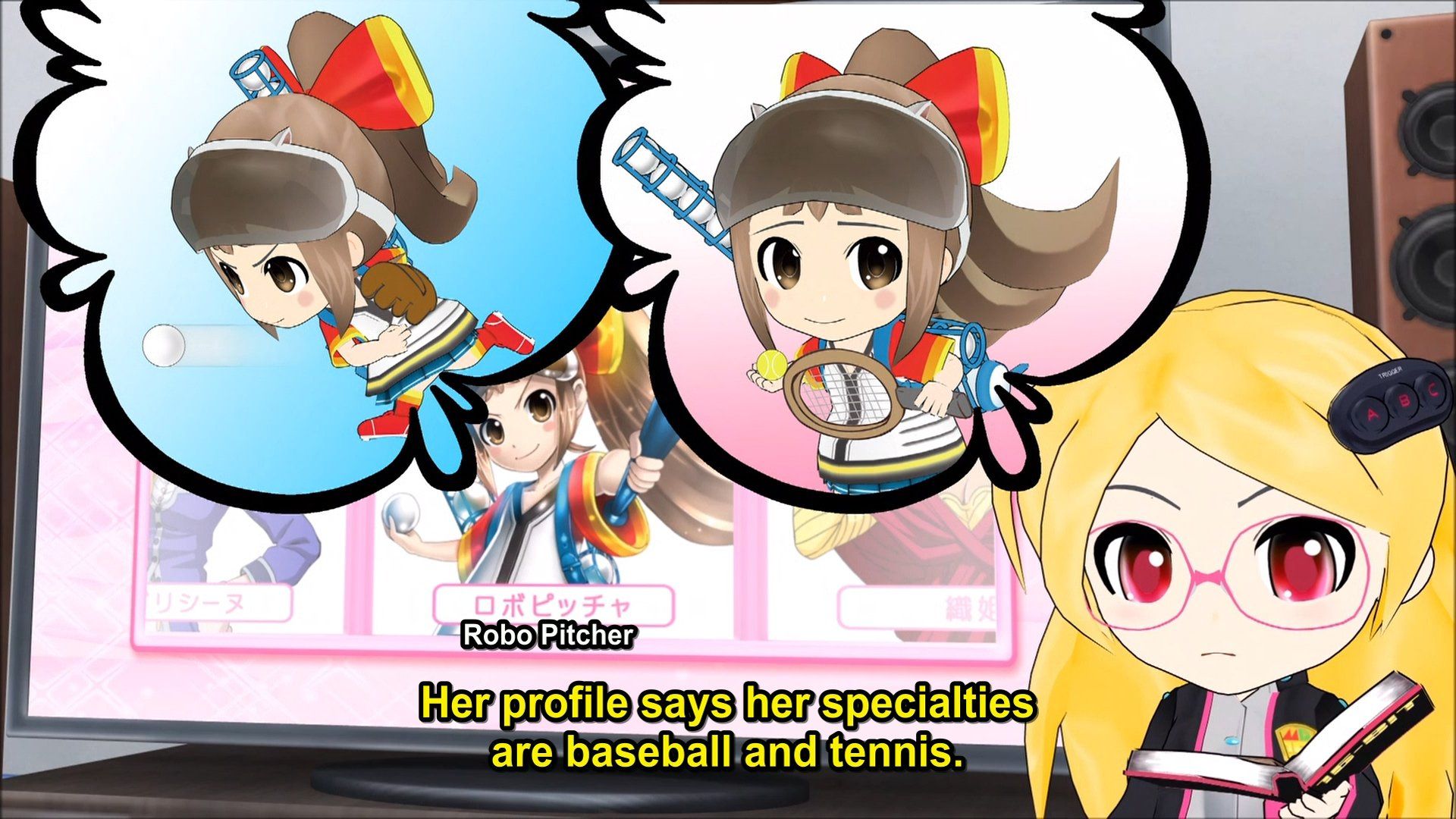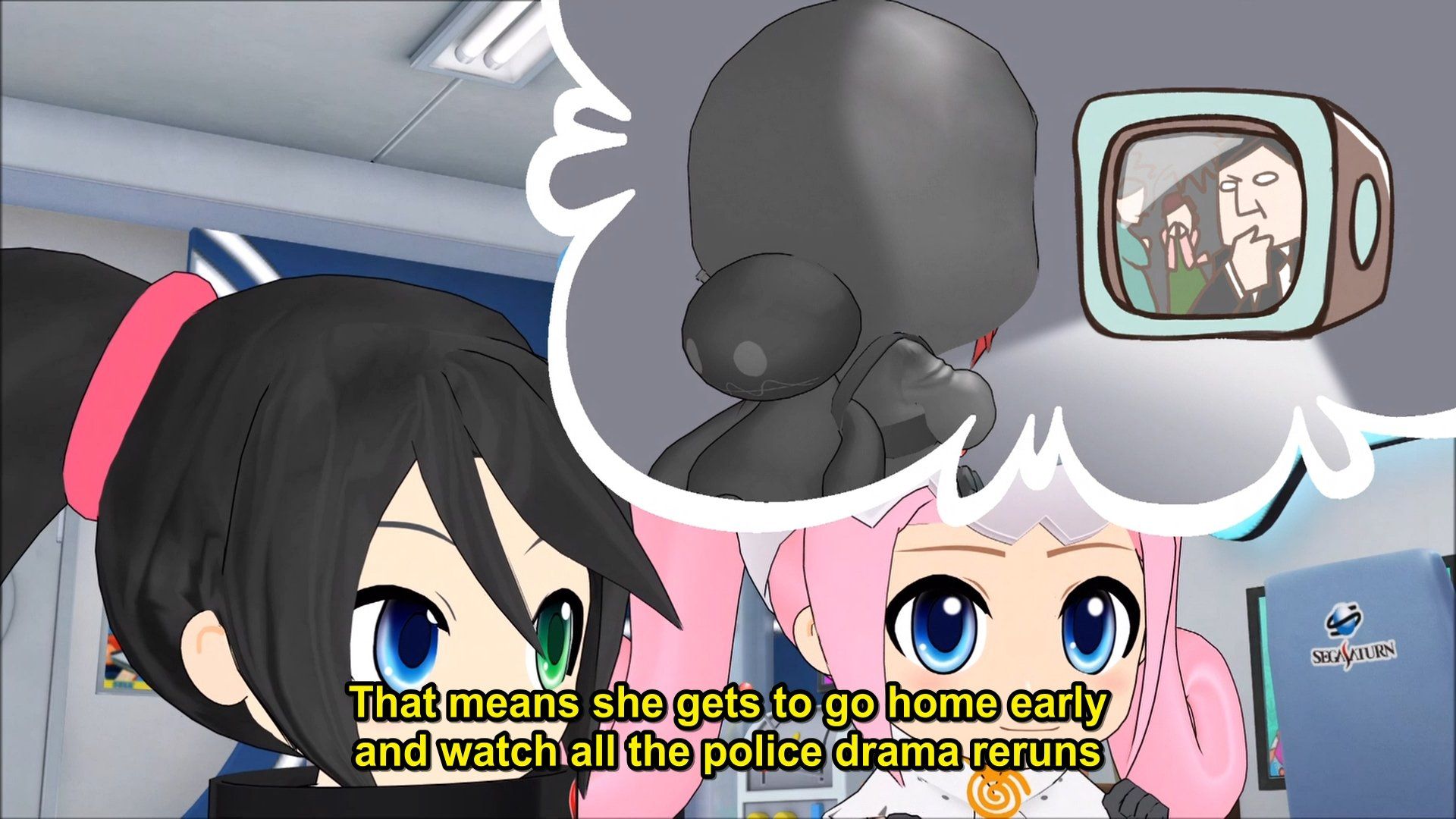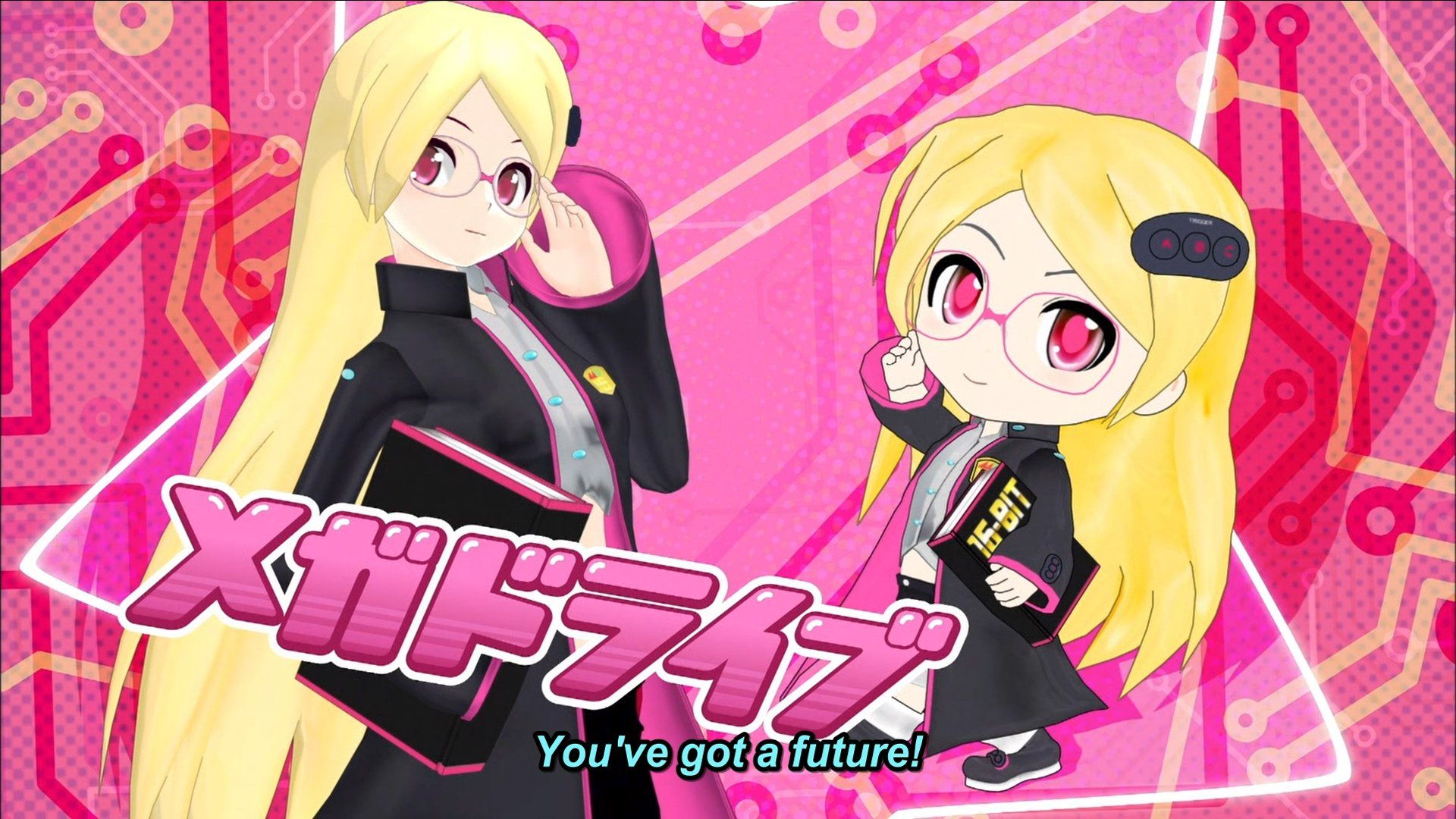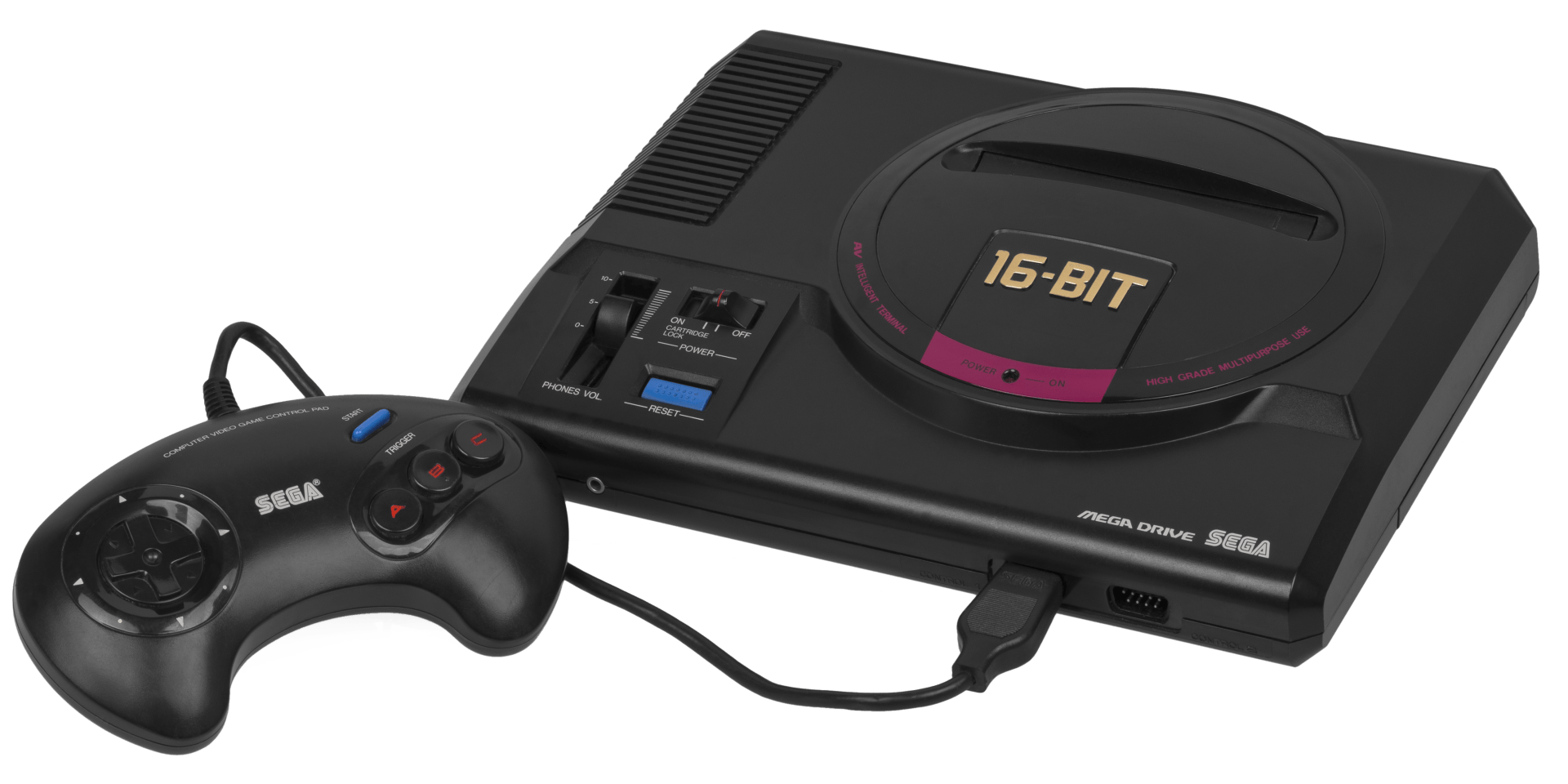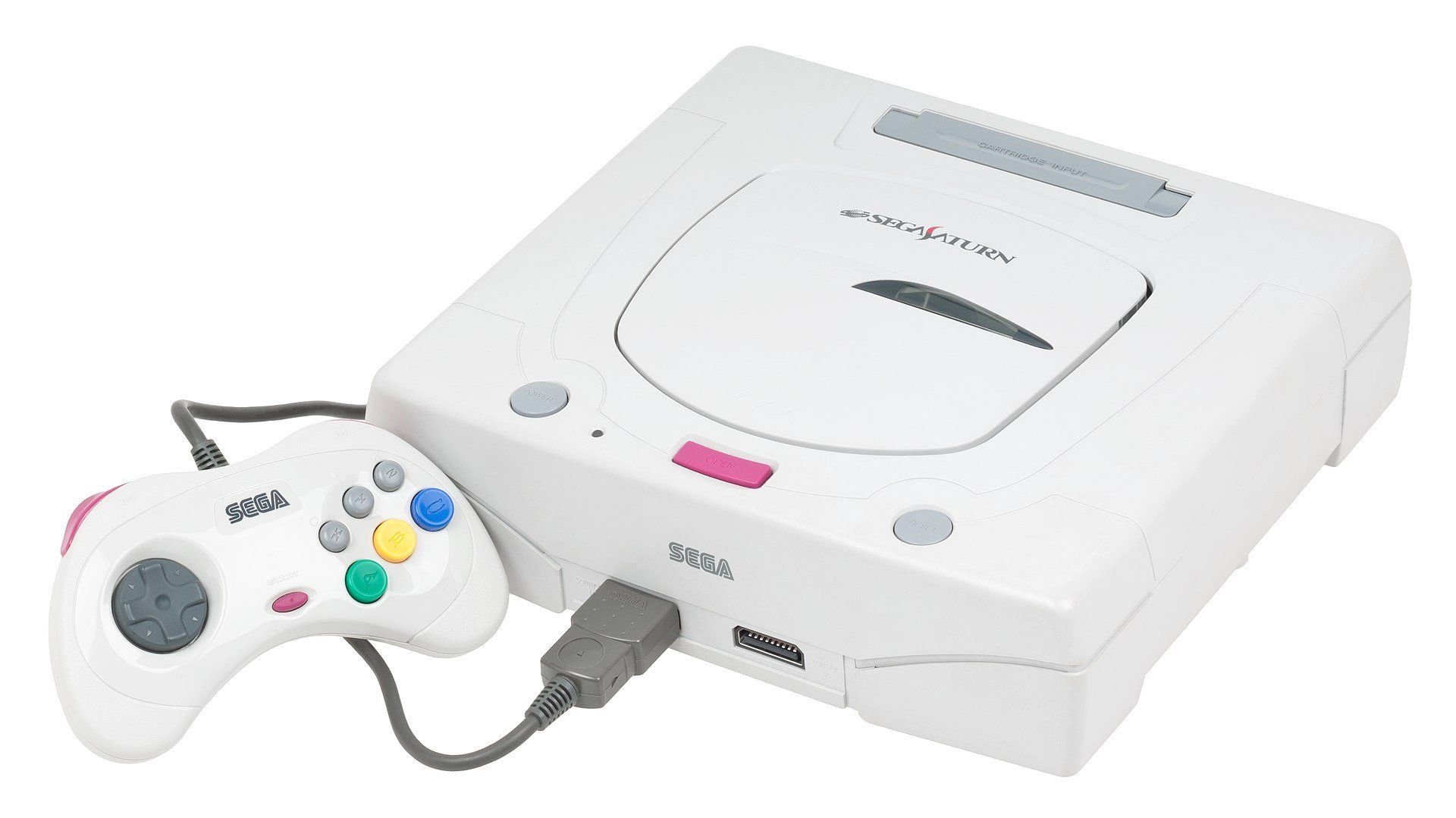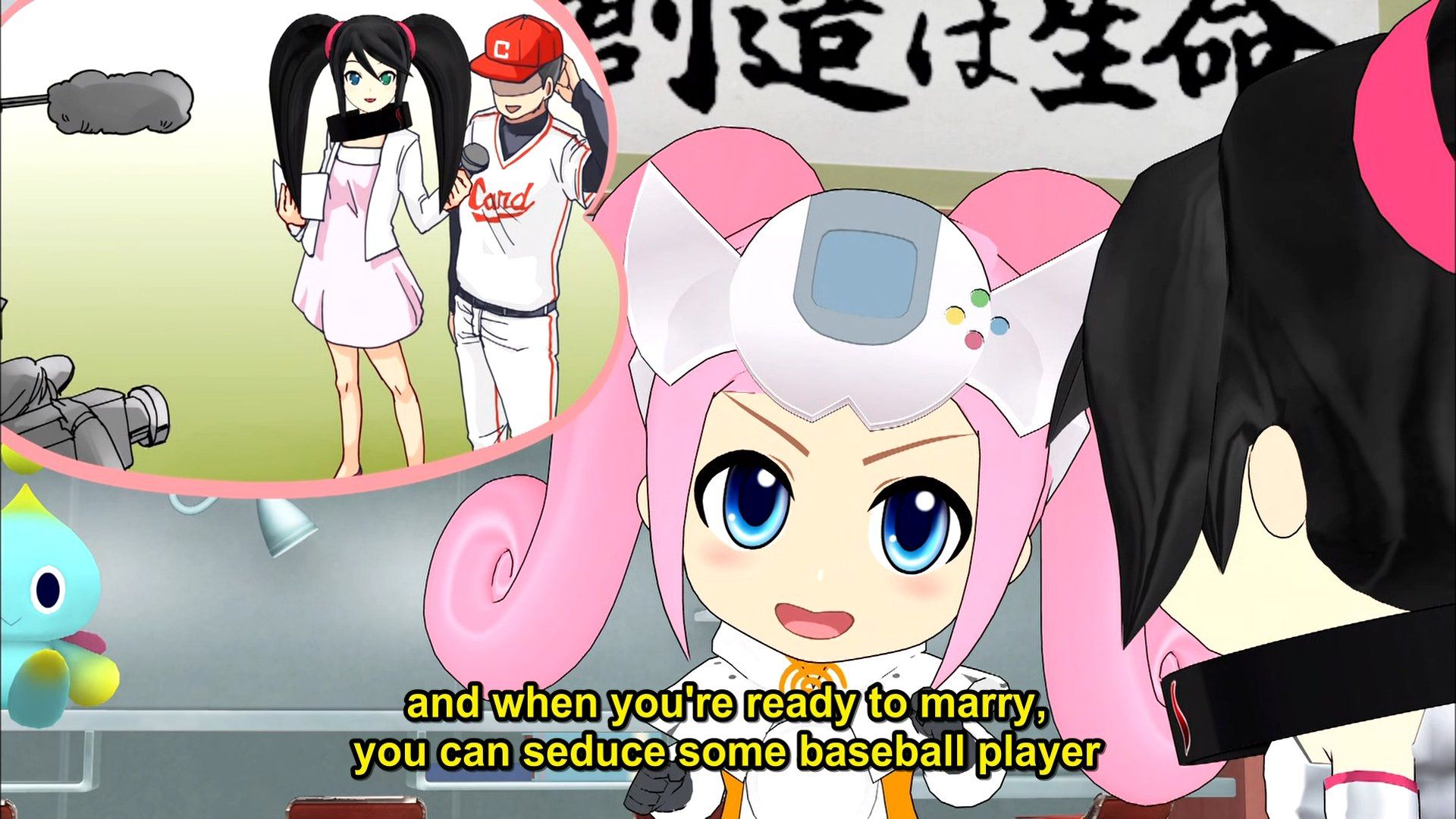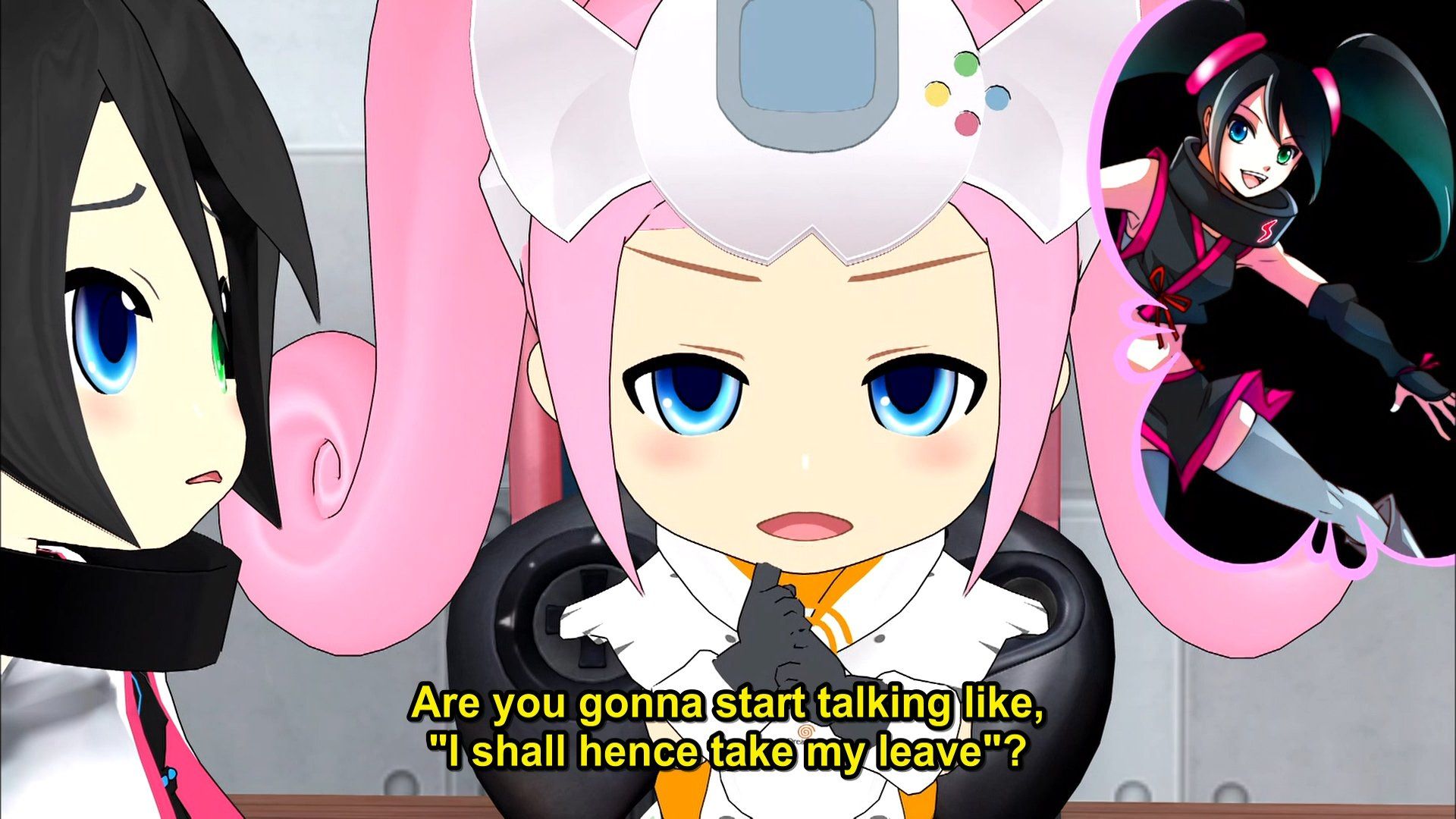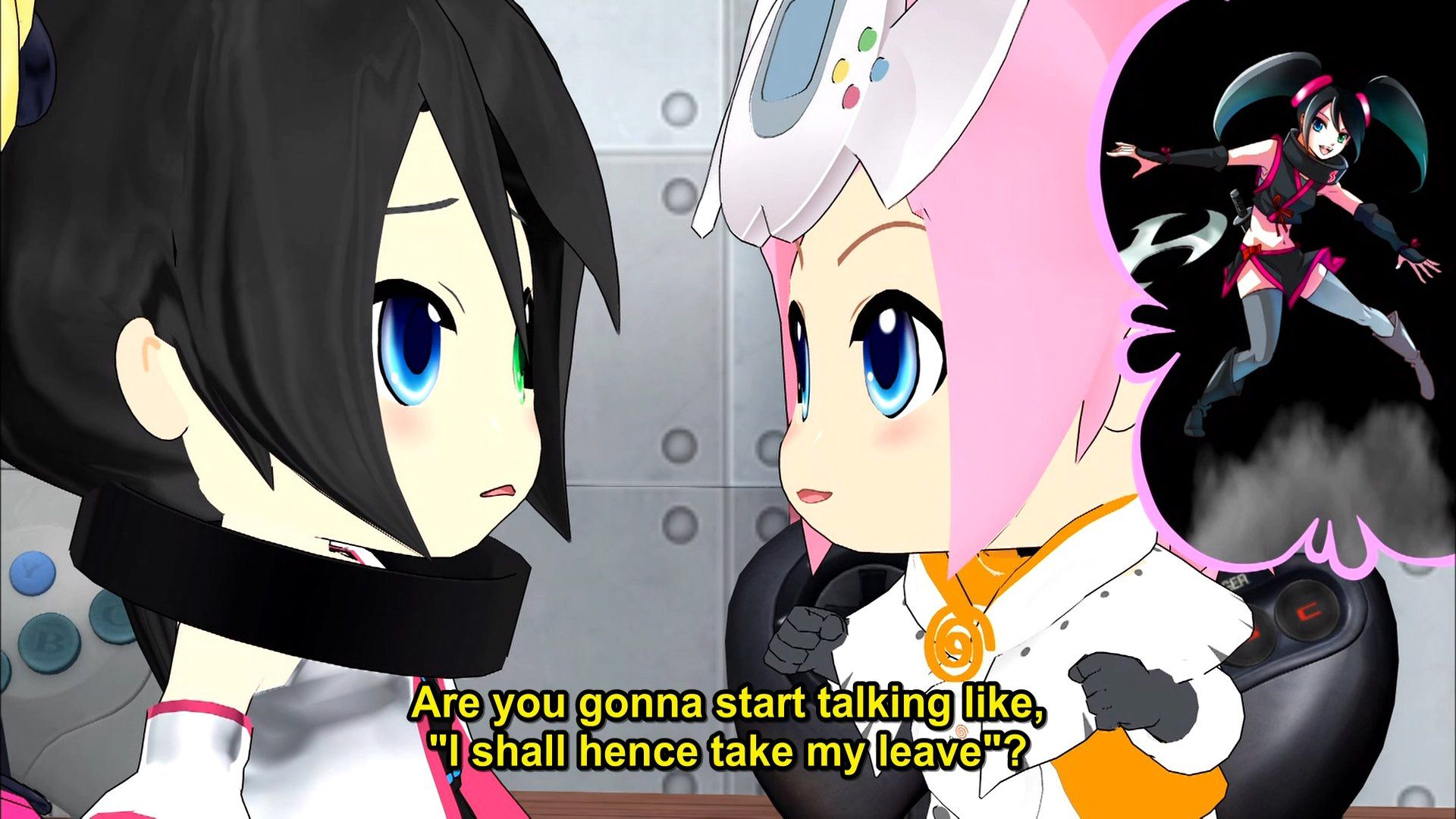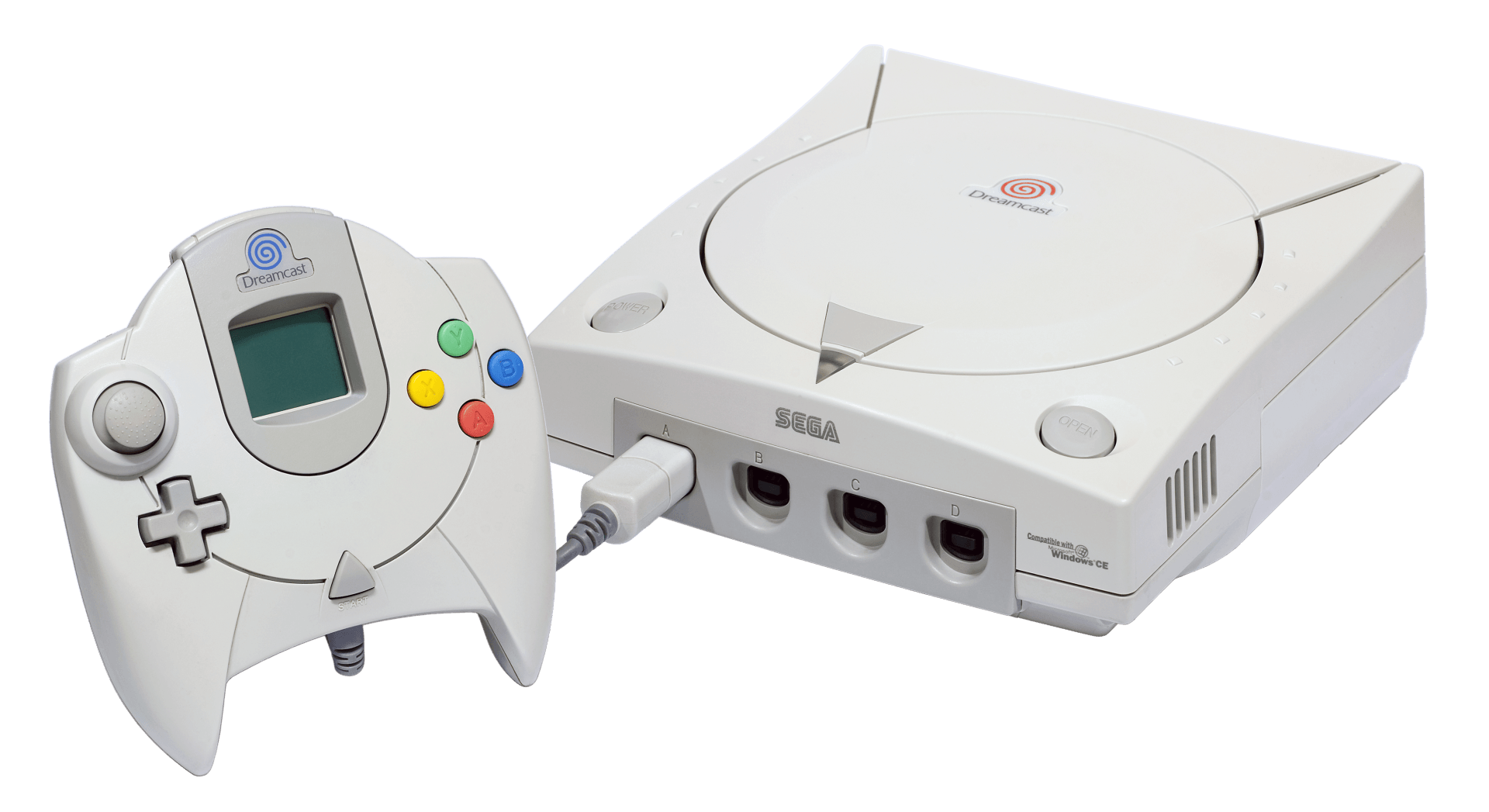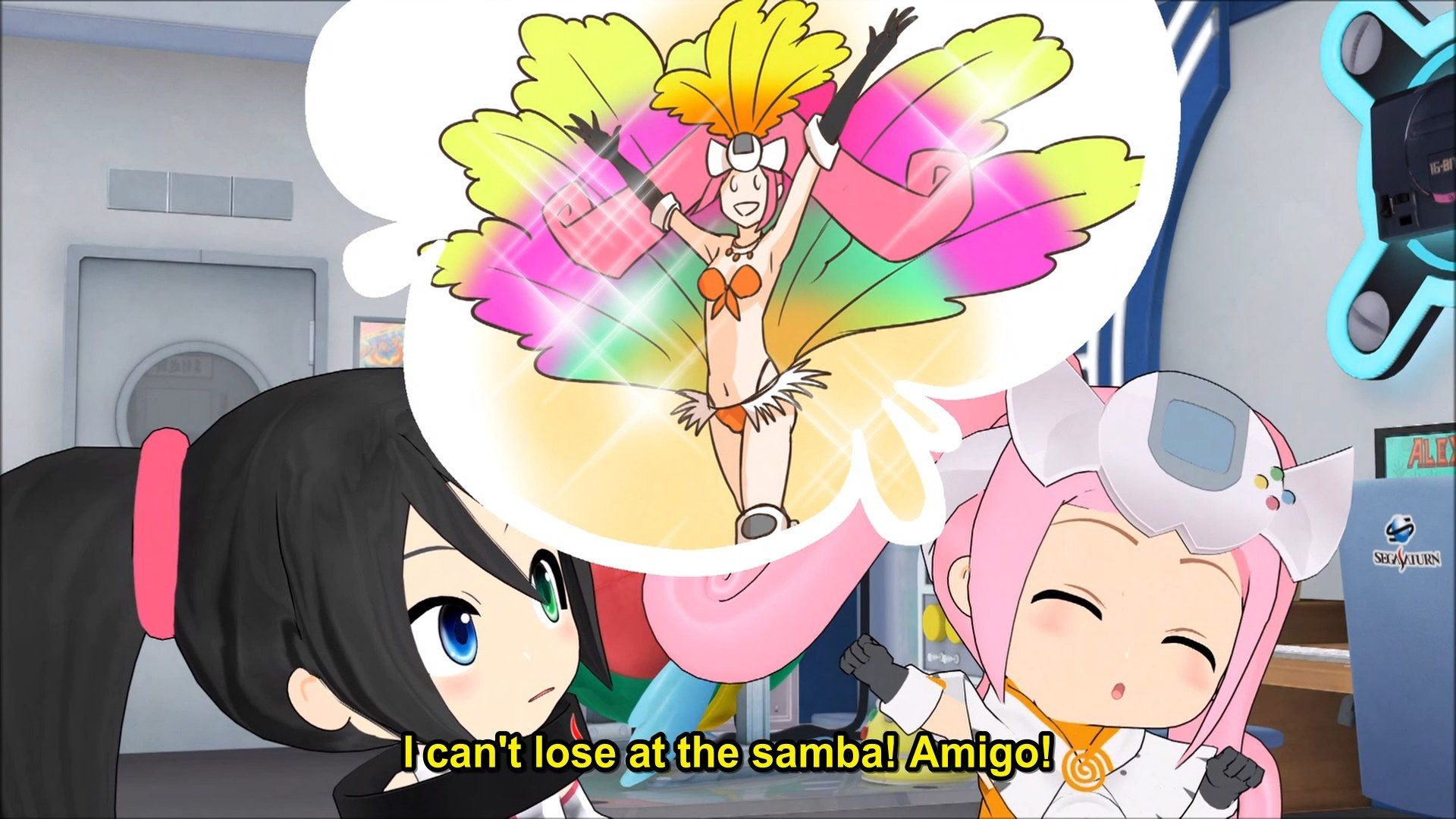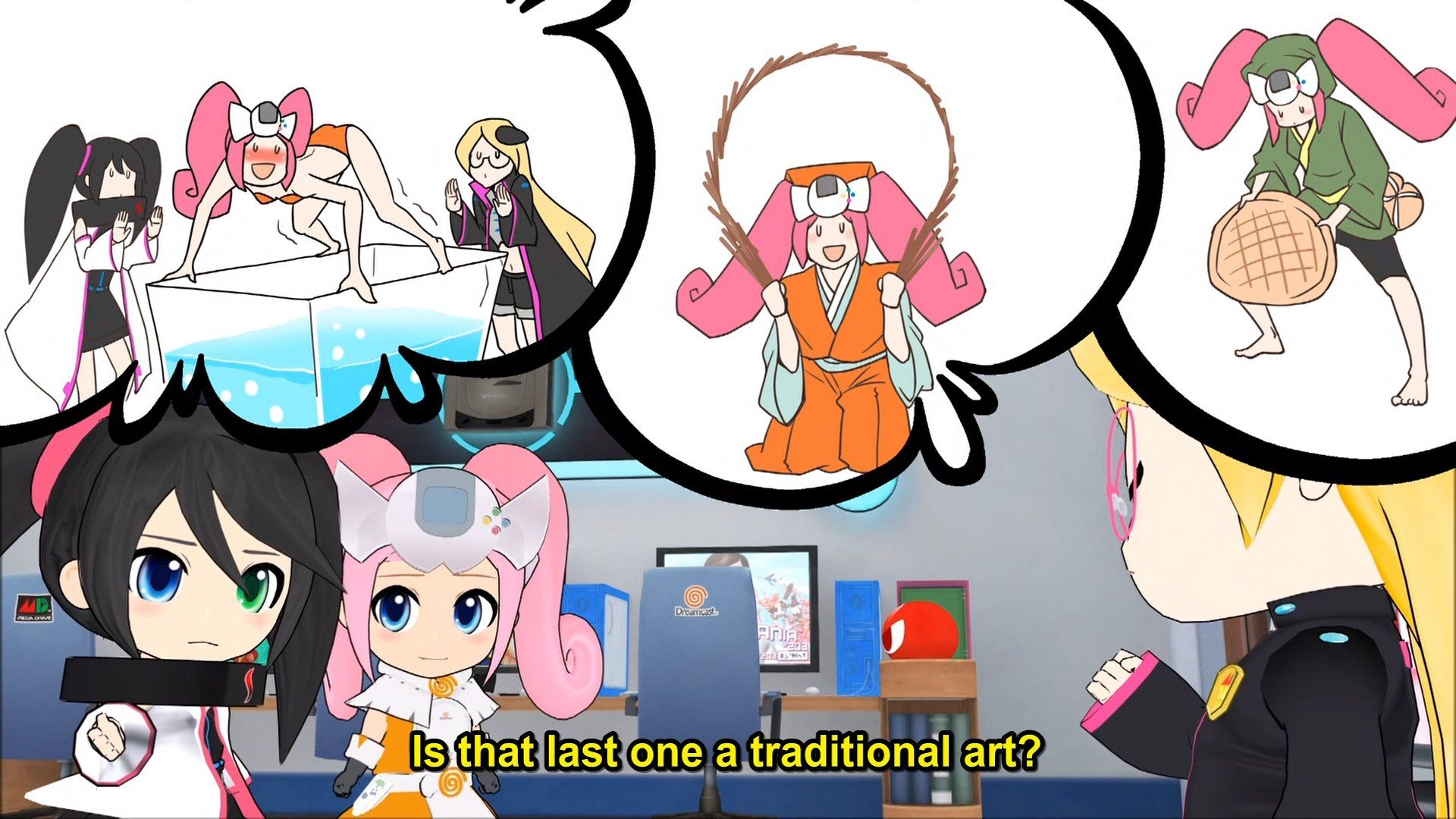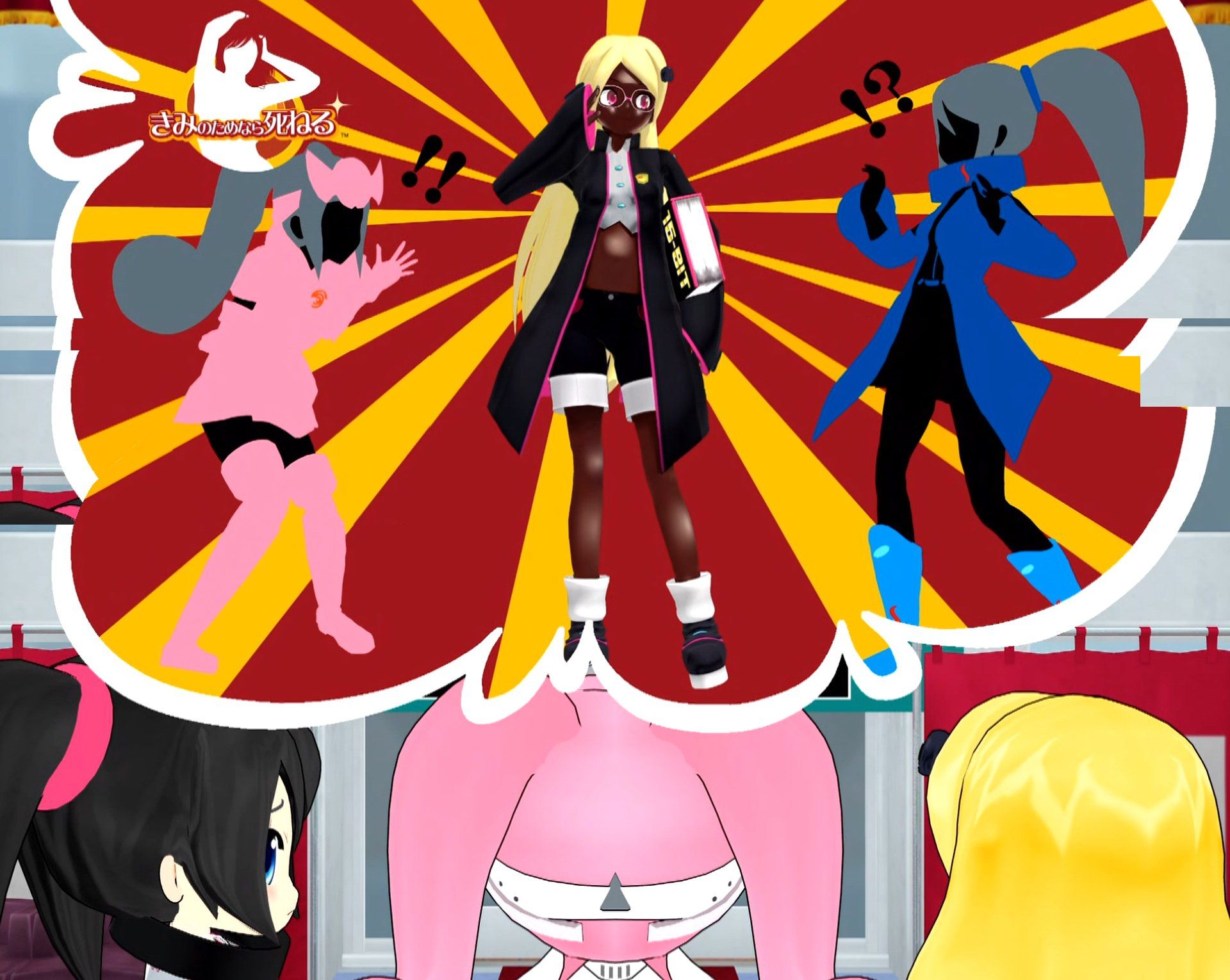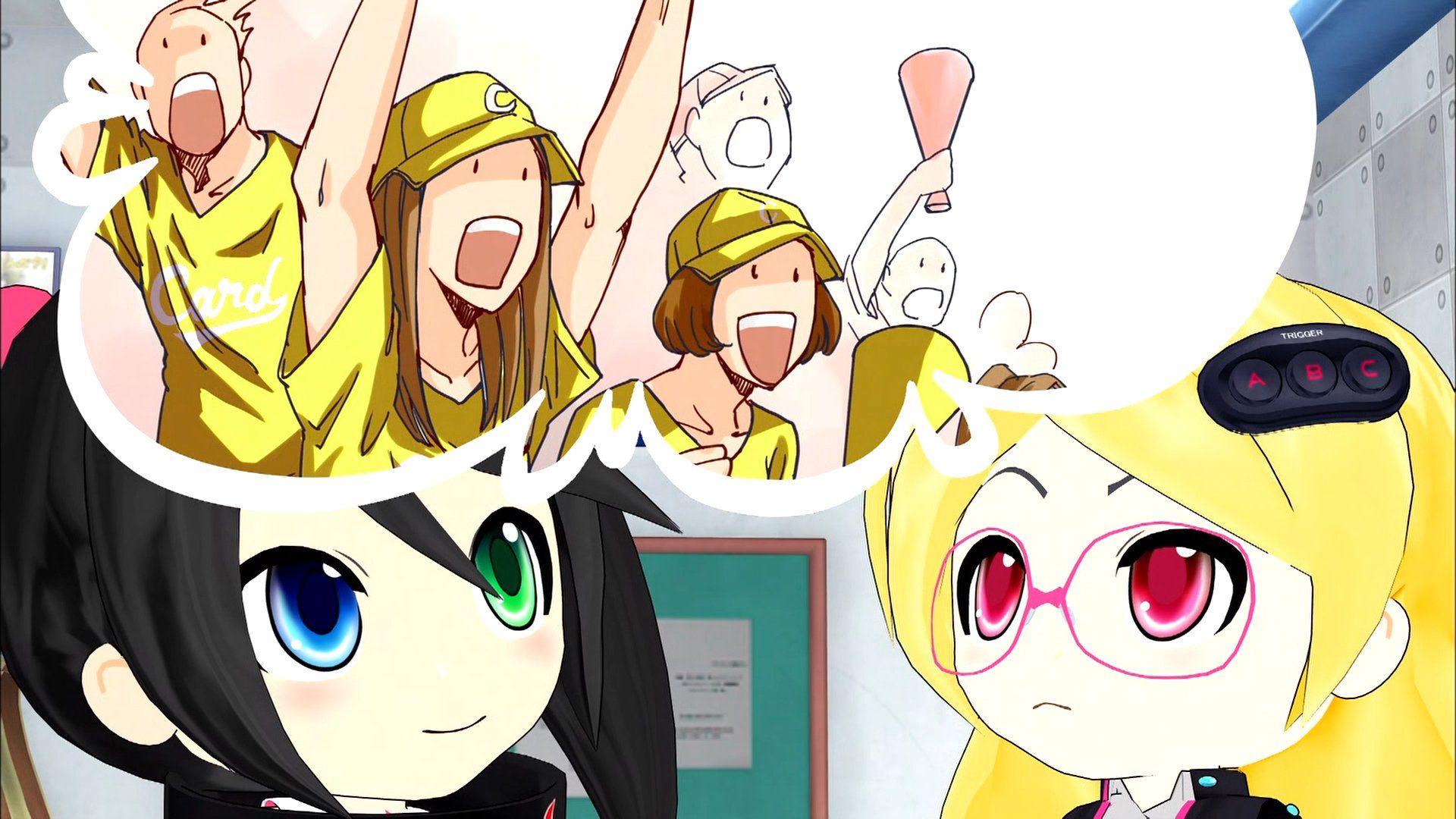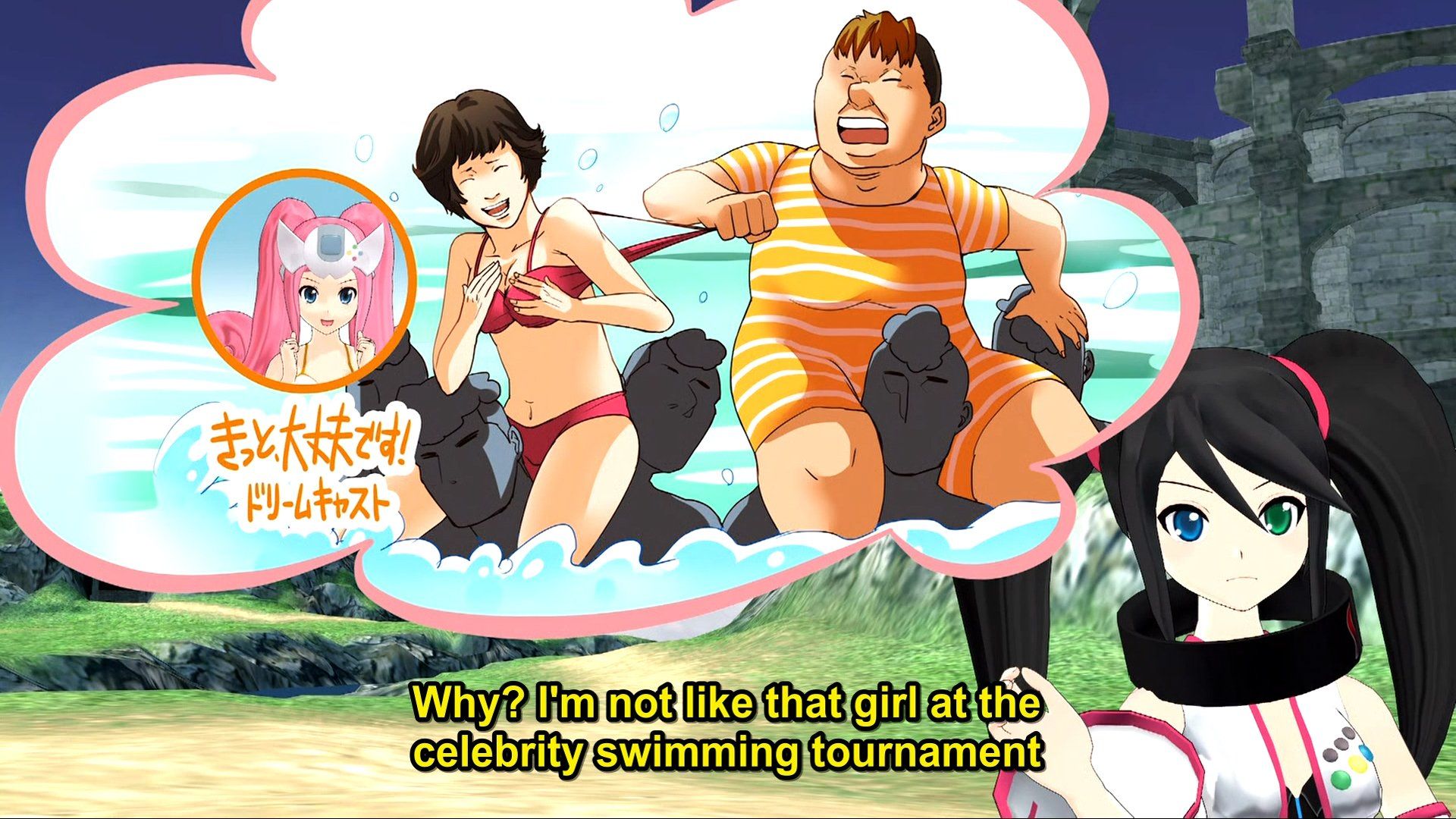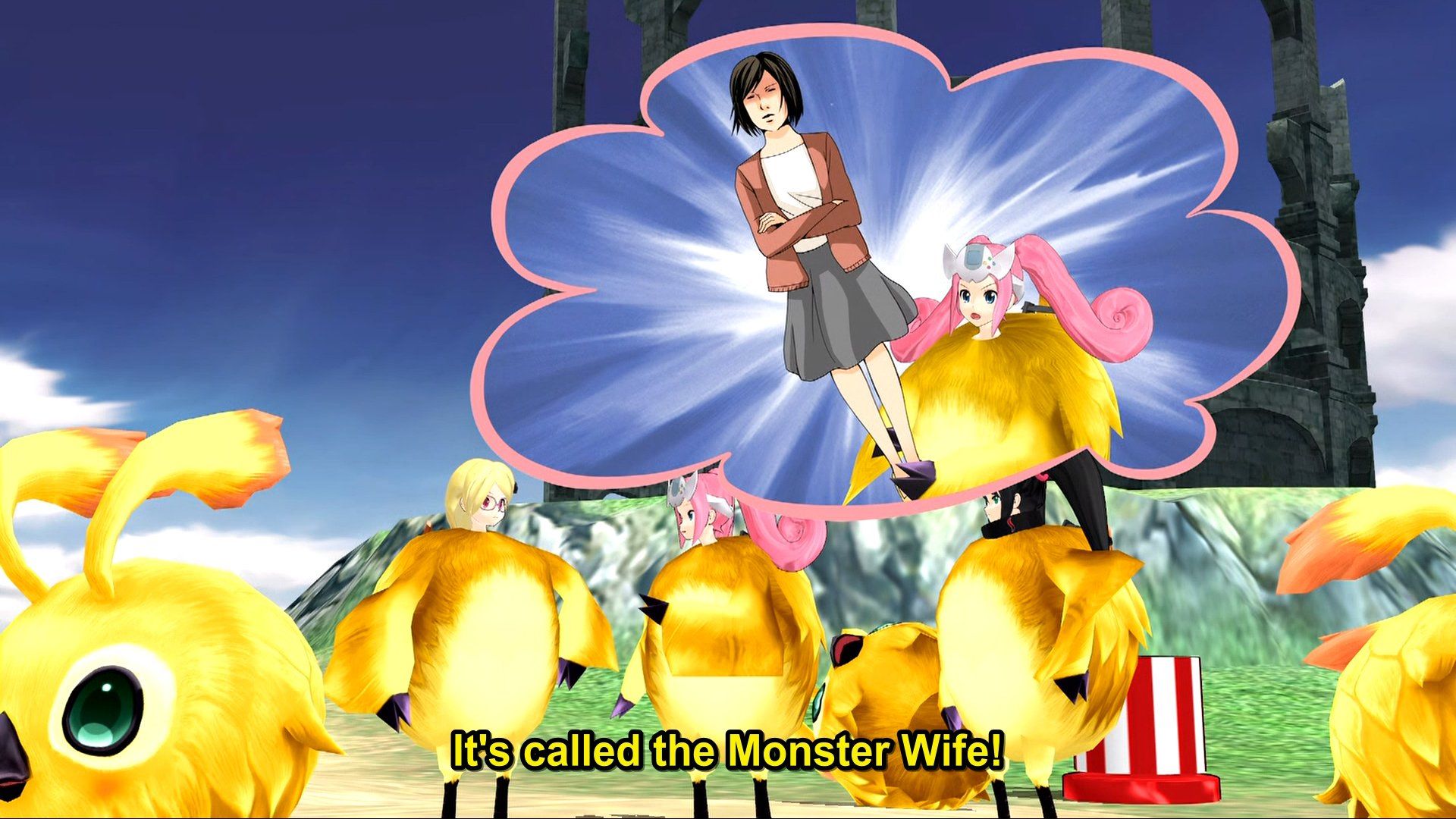[VGMP] Sega Hard Girls 1 - Character Art References
Rory Joscelyne • 15 February 2022
VGMP: SEGA References in SHG's Character Art
One, two - Pon, pon, pon!
Sega Hard Girls was a very niche TV Japanese TV Series from Japan, which we reviewed in Season 1, Episode 3 of Video Game Movie Podcast. In fact the series is so niche, that I have yet to meet a Sega fan who has even heard of it! It's a series where we follow three girls through High School - each one based on a different SEGA Games console. Dreamcast, Saturn and Mega Drive. Along the way we meet other girls (especially in the one-off special 14th episode) but for the most part it's these three versus Sega's historic library of games.
Captain N is essentially Nintendo's 1989 equivalent of this, however that show followed a known Western formula for kids cartoons, and the references were usually pretty obvious - Tetrisland anybody? Sega Hard Girls goes above and beyond any adaptation I have ever seen to bring out some truly rare - and truly bonkers - references. Sure there's the obvious ones - such as jumping into the world of Virtua Fighter - but there are so many other choices that even the most hardcore of Sega fans would struggle to get.
Each character has taken multiple visual cues in colours and accessories, with several characters hiding extra references within their designs. Because of how many characters there are, I'm going to mostly do this in console release order with the exception of characters (such as Mega Drive, Saturn and Dreamcast) that have more than one or two images so that we can get through the one-shot characters quickly.
To view full images, click on one and you can use the left/right arrows at the side of the screen to compare images.
City skyline
Photo By: John Doe
Button
So we start with the earliest of Sega's console efforts - the SG-1000. She appears in the Lovely Girls competition (in fact all the girls do) but we don't see anything else of her throughout the show.
She took me a while to identify as it looks as if she's strapped to a camera, which threw me off. But it's actually an oversized version of the SG-1000 controller, with the circle at the top being the top of the control stick. The red, white and blue colouration matching the colours of the console. You can see the red hold/pause button at the bottom of her skirt.
The reason why she's strapped to her controller is a reference to the controller cable itself. The Player One controller was actually built into the console, so you couldn't unplug it or swap it for a different one.
City skyline
Photo By: John Doe
Button
SG-1000 Mark II gets an appearance in the Lovely Girls competition too. The Mark II was an upgrade on the original hardware by looking less like a toy, including controller ports so you can swap out the controllers at leisure, and there's an expansion port at the front-left.
The SHG version of her includes the black and white cartridge slot design on the right side (her left) of her dress. In the middle of her chest, and at the bottom left of her dress, are black lines approximating the writing quote written atop the original hardware. This quote is in American-English, and not Japanese. This text reads;
"A fun-packed console designed for simple operation. This computer video game with its distinct images allows you to enjoy the maximum in playing satisfaction. Its colorful game play is sure to test your skills, sharpen your reflexes and greatly enlarge your imagination."
The Sega Mark III takes many of its visual cues from the Mark II. The yellow Pause button, the black on white contrast styling, the position of the expansion slot (used in the Mark III for the exterior FM Sound Chip attachment) and the additional Sega My Card slot in front of the main cartridge slot.
Due to the close nature of the hardware designs, it appears the SHG team designed Sega Mark III's character around Professor Asobin - the unofficial mascot for the Mark III for a few years who appeared in the back of game manuals to dispense tips and hints. I've added an image of Professor Asobin as a third image. Bear in mind Center-Sensei is also based on Professor Asobin and his evil variant is called Black Asobin, meaning this character got a lot of mileage in this series.
Sega's first home computer, based entirely on the SG-1000 architecture. The original release came in black with soft keys on the keyboard that were known for suffering from wear. There was an upgrade to the keyboard to plastic keys and it was repackaged as the SC-3000H - with both a black and a red option.
The SHG team have done a wonderful job of combining the two elements in this character design, with long black hair and a flowing red kimono. You can see the SC-3000H keys as a pattern on the sleeves of her kimono, with subtle yellow touches to reference the colours of the keys on the original SC-3000.
The Master System appears as a musical prodigy in this series, with that being a reference to the Japanese console coming with an FM Sound Unit built in as standard.
The look of the front fascia has been transferred to the character by being printed on her skirt, with the controllers printed across the chest and gloves. The iconic red and black is very evident, with the triangular artwork replicated in multiple places including her knees.
While Mega Drive is a character in her own right (as is Mega Drive 2 and each of the Mega CD and 32X attachments), the SHG Team decided to bring in Genesis - the American rebranded Mega Drive - as a character in the show. She's referenced as still being Japanese, but has spent so long studying in America that she's acclimatised to their ways. This results in every cliche'd stereotype being applied to her.
We get the customary cowboy hat (with Genesis controller button accessory), cowgirl neckerchief (in red to match the red patch below the console's cartridge slot) and American Stars and Stripes flag bikini top. Yeehaw pardner.
More interesting details come from the D-Pad accessories on her shoulders, the cartridge slot circle as a belt buckle and the front section of the console printed on her skirt. The tops of her boots also include the Genesis logo with the red power light section detailing underneath.
City skyline
Photo By: John Doe
Button
The first Mega CD is the only iteration of the console that was a front-loading console. Because of this, it has become one of the less reliable drive trays in the range (though the drives weren't intended to be run for over 30 years, to be fair) - these issues are easily fixable. The Mega CD included flashing lights on the front to make it look flashy, and it sat underneath the Mega Drive as the base of the Tower of Power.
The Mega CD Mark I has an amazing design, dressed up as some kind of medieval/fantasy knight. The character has the Japanese Mega CD logo on her collar, CDs on her scabbard and a Mega Drive controller as the crossguard to her sword. Her shield, breastplates and print on the front flap of her skirt are all based on the circular design of the first Mega Drive - likely as a nod to the fact that the Mega CD doesn't work without the Mega Drive attached.
City skyline
Photo By: John Doe
Button
The Mega Drive 2 was a cost-saving new version of the original Mega Drive. It lost the volume slider, it lost stereo sound output completely and it was smaller - which means it is too thin if paired with an original Mega CD. In Japan they coloured the cartridge slot red, with a grey power slider and a blue reset button. By the time the console made it's way to Europe (and even later production runs of the Japanese model) the power slider was replaced with another button akin to the reset button. In Europe both buttons were red while the cartridge port was black.
The character design incorporates the blue reset button in the addition of a blue tie, with more oversized grey elements to match the power slider. Mega Drive 2 is very similar to Mega Drive in every other way, so there's not much unique to discuss here.
City skyline
Photo By: John Doe
Button
The Mega CD 2, like the Mega Drive 2, was a pared down version of it's original. The Mega CD 2 at least doesn't lose any hardware features, but the array of lights have been reduced to one single Access light. The more expensive drive tray was replaced with a simple spring mechanism instead and the unit was slimmed down to match the Mega Drive 2. It came with an extender so you could extend the base if you wanted to pair it with a Mega Drive Mark I.
The character has one of my favourite designs, as it's both cool (in a 90s way) and the hoverboard is a nice addition. She carries a CD and CD player, and she has small versions of the Mega CD 2 as armbands. When I first saw this design I thought it was the Multimega/CDX console because that unit could be used as a portable CD player on AA Batteries.
City skyline
Photo By: John Doe
Button
This is the 32X, known in Japan as the Super 32X. The 32X was a mushroom shaped addition to the Mega Drive which technically doubled the console's "power" from 16 bits to 32 bits. In the 90s, console quality was compared in theoretical "bits" which did little to explain the actual differences in hardware - but as marketing it was geared to suggest that a Mega Drive and 32X system (being 32 bit) could compete with a Sega Saturn or a Sony Playstation. It really couldn't. That's not to say it didn't have some impressive abilities, but most of this add-on was pointless marketing guff.
This design is an oddity, with the only real hint at the hardware coming from the numerous X symbols built into the character's outfit - including all the criss-cross patterns on her sandals and armbands. The black and yellow design is one that could only be a Japanese 32X, as the gold design was missing internationally (the boxart even got a purple palette in Europe), however the character pulls on this design. It might have been more interesting to build her as a hippie-type character rather than a meaningless fairy - due to the connection with magic mushrooms - but I can see why Japan wouldn't have gone for that (they're very conservative in their views towards drugs).
The Sega TeraDrive was another Sega Mega Drive variant, and similar to the SC-3000 it was an attempt to make a PC out of the hardware. It was built in the shape of a PC unit of it's era (before they became upstanding towers) and included a Mega Drive cartridge slot to the top left, a floppy disk drive to the top right and various hidden ports in the bottom left and right corners (for controllers, keyboards and mice).
The character incorporates the keyboard into her collar, with the Mega Drive 3 button controls as a hairpin and floppy drives at her knees. The bottom of her top has all the various lights and ports from the computer, and she includes a mouse as a hip ornament. For some reason she's also designed with cat ears.
City skyline
Photo By: John Doe
Button
The Dreamcast Visual Memory Unit (VMU) was a memory card accessory for the Sega Dreamcast that was designed to slot into the top of the controller. The controller included a hole for the screen so that the VMU could relay unique information to you via the controller, as well as make a beeping sound when saves have completed. However they also included a battery slot in the back that allowed you to take them out of the controller and play them as their own separate handheld games console (though the games were incredibly basic).
Some Dreamcast games really require the VMU to properly play (and as such make little sense when emulated). Sonic Shuffle is one such game - a party board game where you have to select numbered cards to move across the board. In single player your cards will show on screen, but the AI opponents' cards will be ghosted so you can't see what to you're going to steal (if you steal their cards). In multiplayer the
only way to know what cards you'd got was to look at the cards on your VMU, which kept your cards safe from your friends. Several online Let's Play channels (such as Game Grumps) have emulated the game for multiplayer and then were confused at how they were supposed to guess their own cards because they weren't playing with the VMU - meaning everybody's cards are ghosted and essentially random.
The character design includes the Dreamcast's swirl logo in her hair, her dress is a very clear print of the VMU's screen and buttons and she even has a tiny VMU in the choker around her neck. Because she doesn't appear in the show outside of this one image, there's not much else to gleam on her character here.
Robo Pitcher is the odd one out on this list, as she isn't anything to do with video games. She was a toy built by SEGA. You'd load balls into the ball-loader at the back, and the pitcher would hold the next ball at the end. The blue arm would then rotate round fast to hit/throw the ball, and you'd have to try and hit it with your racket. Like a cross between tennis and baseball.
The character design incorporates the spaceman-esque visor ontoher forehead as a pair of shades, with the ball-loader strapped to her back with balls ready to access. Her colours match the white of the unit and the colours on the front sticker. She got three pre-posed images in Episode 8 as the girls discuss her chances in the Lovely Girl competition.
The Sega Game Gear was a portable handheld console from Sega that ran largely on Master System/Mark III hardware, albeit with a couple of minor upgrades to colour palette. It was the first mainstream handheld console with a full colour screen, and that screen was an LCD screen way back in 1990 (they wouldn't become a standard until the mid-2000s, and would eventually be phased out by the mid 2020s).
One of the best designs out of all of the girls, Game Gear's chest is a literal print of the console's front. The three colour logo, power light and white naming on the left side of her chest, the blue start button and green text on the right with the screen in the middle. Add to that the two buttons and D-Pad at the bottom of the hoodie, including the speaker holes and we have a pretty nice design. But then you add to that her hood includes a print of the Game Gear's Japanese TV Tuner (which included a VHF/UHF switch, a Call Button and two Tune buttons - up and down). her tri-coloured hair matching the RGB logo, and the emo Game Gear bear and this is a truly inventive piece of work.
There are several jokes made in the show at the expense of the Game Gear. The girls state that she tires easily and often goes home early - a clear comment on the Game Gear's infamously terrible battery life (6 AA batteries would often last only about an hour at best, versus the Game Boy's 6 hours on 4 AA batteries). They also mention her fascination with TV, another clear reference to the TV Tuner add-on.
City skyline
Photo By: John Doe
Button
Now we hit the main three characters, starting with Mega Drive. The Mega Drive was Sega's most successful console, taking Nintendo's 90% market share in America and stealing it away to near-parity, decimating Nintendo in Europe and fighting back the gaming mega-giant in Japan too. The Mega Drive came out a good 2 years before the SNES, so it had time to build a decent library for itself (before Sonic the Hedgehog in 1991 launched the company into super-stardom) and as such included some innovative features for it's time.
Sega always built their systems with Hi-Fi technology and design in mind, which is visible here by the headphone socket, volume dial and a power switch reminiscent of Hi-Fi and mixing desks of the period. In fact the headphone socket offered Sega fans the first console experience in true stereo sound (with mono sound coming out of the back). Cables have since been made to accommodate both video and stereo from this port as stereo sound on TVs in much more common now than in the late 80s. The circular design of the cartridge slot and the large 16-BIT text in gold were a bold statement by Sega that they were here to take the multimedia entertainment market.
The character design incorporates the 16-BIT text by adding them onto an encyclopaedia the character uses. She has the three button controller as a hairpin, with the Japanese logo on a badge on her outfit (giving it the appearance of a uniform - fitting for a character so studious). This three button motif is also visible on her shoes and the sleeves of her jacket.
There are a couple of unique artworks made for Mega Drive over the series. When the girls are discussing going to a talent competition as a rock band in Episode 8, Mega Drive explains that she can't actually play drums musically, but can catch timpani (a food) in her mouth as she makes them jump by hitting the drums.
The other images are from the girls suggestion of doing a Haunted House for the Talent competition. We then see the Haunted House theme they actually wind up doing and Mega Drive is the only one to actually dress up, the others just add a bit of blood or vampire teeth.
City skyline
Photo By: John Doe
Button
The Sega Saturn was the true follow up to the Mega Drive and wound up doing horribly in the West due to it's advancements making it a pain to program for. It was the first home console to include two GPU's, it also ran with dual CPUs - another first for console gaming. It also stands as the only console designed to render 3D graphics as quads (four sided shapes) instead of triangles/trilaterals like the Playstation and every other system since. This has made emulation very difficult (though it is starting to catch up).
The Saturn was designed as the ultimate 2D games machine, and ultimately achieves that goal - blowing the Playstation and other contemporaries out of the water in 2D gaming. However this was in an era where 3D gaming was in demand, especially in the West. This caused the Saturn to fail in Europe and in America - but in Japan this was considered a key strength and the system thrived.
The first release of the console was a military grey. However it seems the character took her design cues from the second release, seen above. The clean white design matches her dress, the pink Open, trigger and Start buttons match the trim of her outfit, and she has the controller's main 6 buttons on the right side of her chest. The Japan-only stylised S used on the top logo appear on Saturn's shoes and collar - which in itself seems based on the CD Tray window. Finally her eyes are green and blue - a nod to the A and C buttons on the controller.
In Episode 3, Dreamcast decides that Saturn should become a TV Reporter so that she can have adoring fans, gain access to a professional baseball player and marry into wealth. These are the stills that run up to that premise.
There are also unique artworks made of Saturn as a Ninja (Episode 5) and as a Maid (Episode 11). Those images are shared here for completions sake.
City skyline
Photo By: John Doe
Button
Lastly we have Dreamcast - quite possibly the best games console ever made, fighting the impossible odds to be truly revolutionary. The Dreamcast was the first games console to be released with a modem for internet connectivity (other consoles could go online, but only with additional hardware), which could also be swapped with a Broadband Adapter later in the console's life - making it truly a step ahead of even some home PCs at the time. Sega changed their development structure to allow game directors to develop and design their own concepts - leading to some of the best franchises in the industry such as Jet Set Radio, ChuChu Rocket, Samba De Amigo, Space Channel 5 and Rez.
The console had extensive browser support (unique to each region), a karaoke add-on, online play, the first online RPG on a console, online leaderboards, webcam chat (with the right software), microphone chat (with specific games), free Downloadable Content (DLC), retro game loan service (via Dream Library, exclusive to Japan) and much much more.
The character design incorporates the orange and white colours to the console and logo (the logo was blue in Europe due to a copyright issue), includes a print of the top of the console on her top, the swirl logo as a belt buckle and on her collar and she has VMU screens on her knees. She also wears a Dreamcast controller headband and a VMU for a hip ornament.
There are a few unique artworks of Dreamcast in the show, and one of them is a very direct game reference.
The first image, as seen in it's subtitle, is a reference to Samba De Amigo - a Dreamcast rhythm title with a Mexican theme which came with Maraca accessories (more on this below). She even basically namedrops the game - "I can't lose at the samba! Amigo!"
The other two pictures include her suggesting she'll do a traditional art at the Talent Show - but Mega Drive questions whether suspending herself above water in a bikini classifies as a traditional art. Also bear in mind that Japanese tradition is to read from right to left, which is why the "last" idea is on the leftmost side of the screen.
Then in Episode 11 she imagines the costume they're about to get is a Maid uniform.
City skyline
Photo By: John Doe
Button
There is an artwork of the girls all working together on the Talent Show as a rock band. The artwork (while basic) is cool, however we also see Dreamcast say "I... can only play the maracas." - a very clear nod to the game Samba de Amigo and the Maraca controllers.
The Dreamcast version of the game came with a "dance mat" and two sensors in the bar at the front. These, plus the motion sensors in the maracas themselves, would track your hand movements and apply them to the game.
The girls are sometimes drawn into large scale artwork that the show pans up and/or down over, meaning the full image isn't visible all at once. Here I have taken these images and used Photoshop to stitch as much of the full image together as possible.
The first image is from I Would Die For You, known internationally as Feel the Magic XX/XY (America) or Project Rub (Europe). I discuss the history of this game in the Episode 13 breakdown, so keep an eye out for that!
The second and third images are from Love and Berry, a girl-centric Arcade game where you collect cards to dress your characters up. I will go over this title in more detail in the Episode 13 breakdown.
City skyline
Photo By: John Doe
Button
Strangely, the girls aren't the only ones given unique artworks, Jeffry from Virtua Fighter gets two such images in Episode 4 as the girls ponder the amazing future he has after he revives Space Channel 5's dying ratings. They suggest he could either be a daytime TV host, or be the face of a TV Dinner brand.
That's all of the main characters covered, next up we will go over the Sega references in the Sehagaga Academy's atrium - trust me there's plenty to cover in this 8 part article series;
PART 1
- Character References
PART 2
- Atrium References
PART 3
- Classroom References
PART 4
- Episodes 1 to 4
PART 5
- Episodes 5 to 8
PART 6
- Episodes 9 to 11
PART 7
- Episodes 12 and 13
PART 8
- Episode 14/The OVA Movie
Please check back regularly for updates, and do follow our podcast including our episode on Sega Hard Girls at www.vgmovie.co.uk.

Blue Streak, speeds by... Sonic the Hedgehog (2020) is Hollywood's first big blockbuster attempt to bring Sonic to the big screen. A much more popular effort than the 1996 anime movie, this one sees Sonic come into the "real world", but that doesn't mean that it isn't jam-packed full of Easter Eggs. And some of them are references to other Sega franchises.

First things first - DO NOT WATCH THIS MOVIE. Kung-Fu Master may have the licence for the game, and it may include a few scenes at Arcades, but the story is nothing to do with gaming - and the story it represents is a literal crime. A vile, vile crime. With that out of the way, there are some interesting arcade machines visible throughout this film - all of which are here. So you have been saved from having to watch this vile garbage - and saving you the criminal act of watching it.

Also known as Sonic the Movie, the Japanese OVA was actually a run at a possible series that never materialised, instead leaving us with two episodes hastily stitched into a "feature". And boy, did they push taste and decency for some of this. Other than Robotnik chasing underage skirt, it's largely inoffensive. But unfortunately that story angle wound up kick-starting a long running VGMP joke of Sonic adaptations having to reference breast milk (which the 2020 Sonic movie also references).

I love The Wizard. It's so bad. The first major disagreement between Rory and Jamie in VGMP, Rory fully recommended The Wizard as a movie, whereas Jamie fully rejected it. It's not hard to see why this movie caused such a rift of opinion - it genuinely tries to be a deeper and emotional story, but it's still a Nintendo marketing product (and an out of date one, at that). One thing The Wizard does have, is a lot of videogame references.

The House of the Dead movie brings together two major events in film. It's the first foray by Uwe Boll into video game adaptations - the start of a terrible career. And it was the last ever movie to use the turn-table technique for 360 degree shots, as it was too dangerous to keep using - much like allowing Uwe Boll to have a film career. This film doesn't have many proper references, instead lazily throwing in random micro-shorts from the first three House of the Dead games (in no particular order, for some reason).

The first appearance of Jon Gries in a video game culture movie, and he would return in Noobz (2012) to steal yet another movie. Joysticks is an awful comedy movie, attempting to cash in on cheap teen humour of the time with a big dose of objectifying women. But to it's credit, it does showcase a lot of great arcade cabinets from 1983, and all in fantastic condition too! These screengrabs are ripped from the limited-run Blu-Ray release of the movie, which represents the best this film has ever looked. However this was a relatively low budget feature of it's time, so don't expect prestine visuals.

Tron is an undisputed 1982 classic that had a major impact on 80's culture and gaming aesthetics as a whole. And yet, when we reviewed it, it turns out the movie itself is a big bag of style over substance. The main videogame the movie revolves around is Space Paranoids, and it is not a real game. Several videogames were later made of Tron, but none of those appear in this movie.
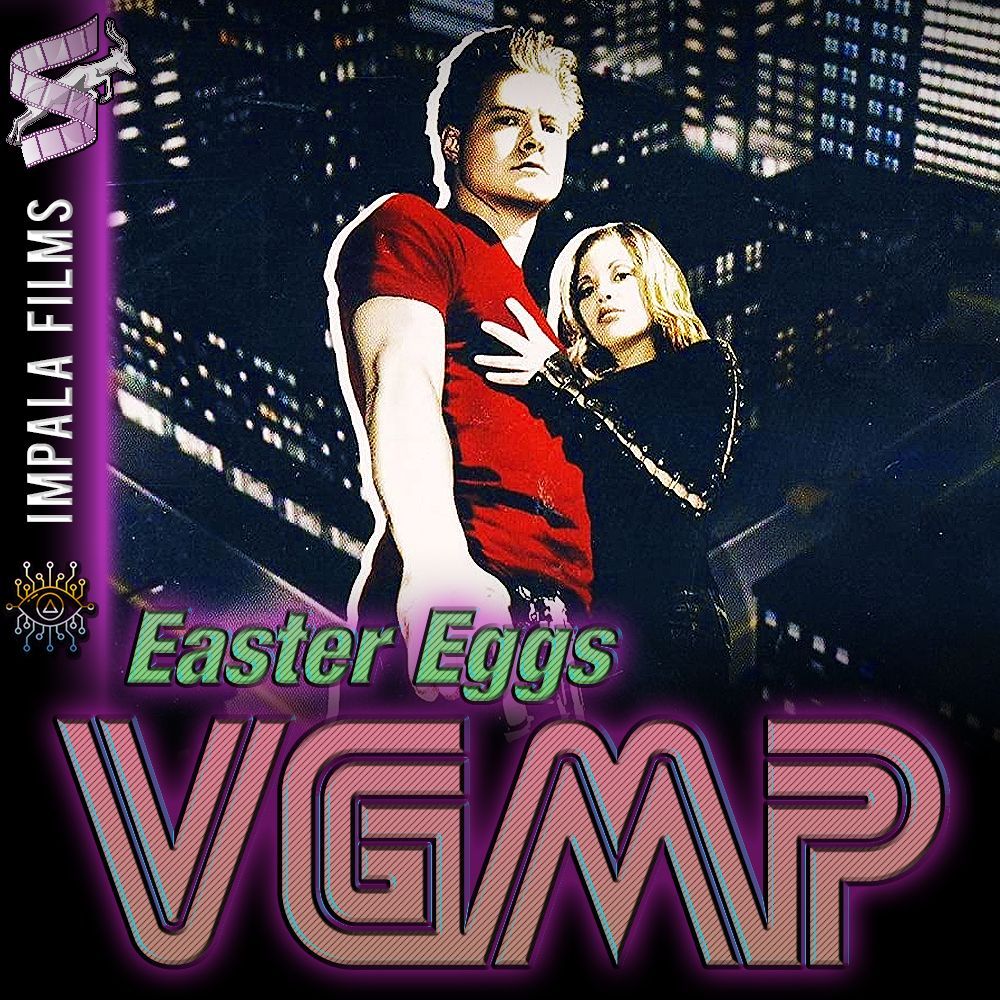
Gamebox 1.0 is an odd 2004 movie starring the guy who played Harvey in Sabrina the Teenage Witch. You could technically call it a dramatic horror, if any of it was dramatic or a horror. As you can see from the shot above, the details were so vital to this film that there's a guy at "work" just staring at a blank screen. Regardless of the low budget nature of the film, there are still a surprising number of references hidden in this movie.

